Łódź in Poland, is it a city you ever thought of visiting? If not, think again! We didn't have very high expectations when we came here, but we can say without exaggeration that we were floored. What a wonderfully cosy, beautiful and interesting city! There is a bit of a dark history here, but there is a spirit of progress and youthfulness that is infectious on the streets.
Innehållsförteckning
Łódź in Poland
We visited Łódź in Poland in September this year, when the pandemic was in a quiet phase, and want to recommend this gem for those who want to plan future trips. Łódź is an oblong and quite different city. Instead of revolving around a central square, long streets run between the old factory areas.
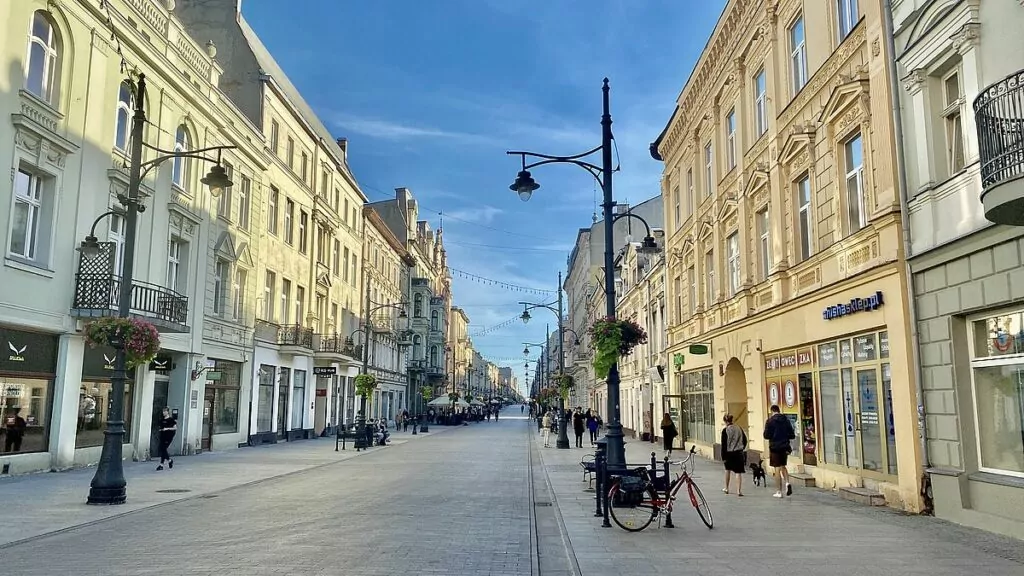
Once upon a time there were three important factory owners here:
- Israel Poznański (1833-1900)
- Henryk Grohman (1862-1939)
- Karol Scheibler (1820-1881)
In the 19th century and the first half of the 20th century, Łódź was extremely successful in the textile industry. Aside from England, which had even larger textile industries in Manchester, they were the largest in the industry in Europe. The work was gruelling and hard, but there were jobs and the city grew rapidly.
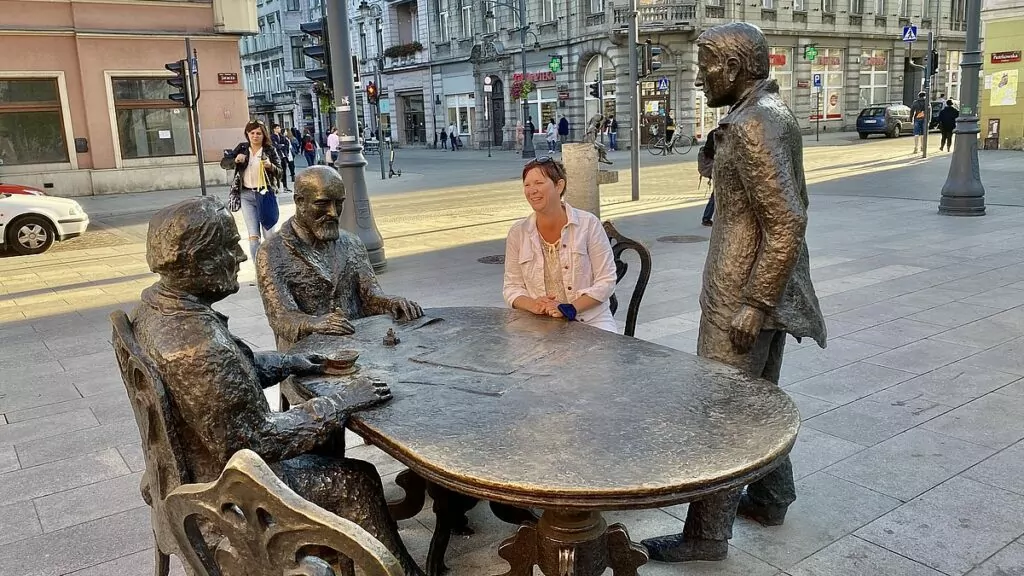
Much later, when the industry was replaced by Asian factories, people became unemployed instead. The city had a reputation as a boring factory town, and this was hardly a place to visit as a tourist. But now something has happened!
The old factories have been refurbished and the beautiful old buildings now house museums, shops and restaurants. The city is buzzing with life and tourists are gradually discovering that Łódź is a really exciting, interesting and cosy city.
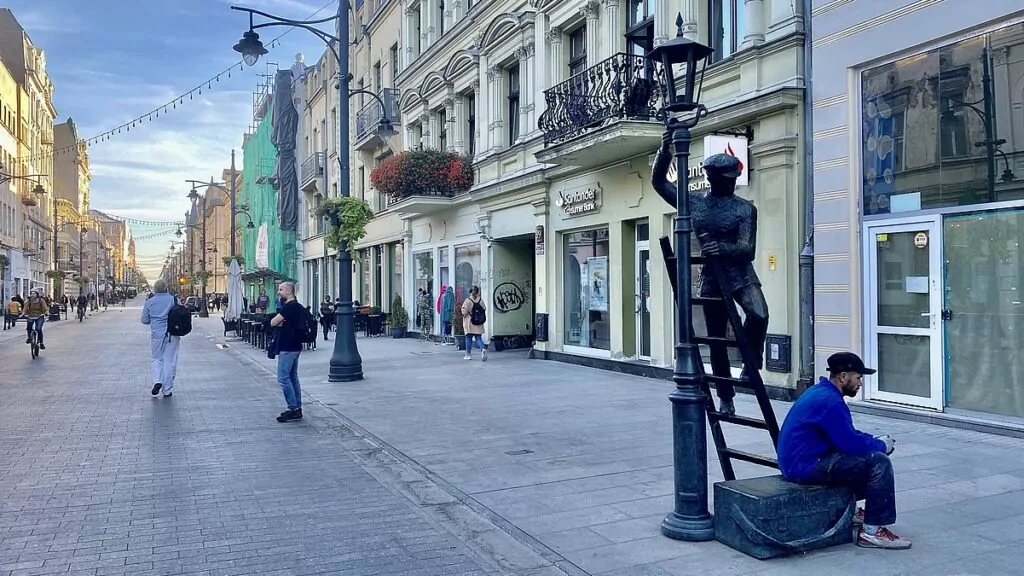
Łódź is located in central Poland, about 13 miles south-west of the capital. Warsaw.
1. exploring Manufaktura
You can't visit Łódź without exploring the Manufaktura. This was once the home of factory owner Israel Poznański's business, and inside the buildings the weaving machines were in full swing. What's fascinating is that all the buildings have been carefully renovated and the brick facades have been plastered so that the old factory buildings are now strikingly beautiful.
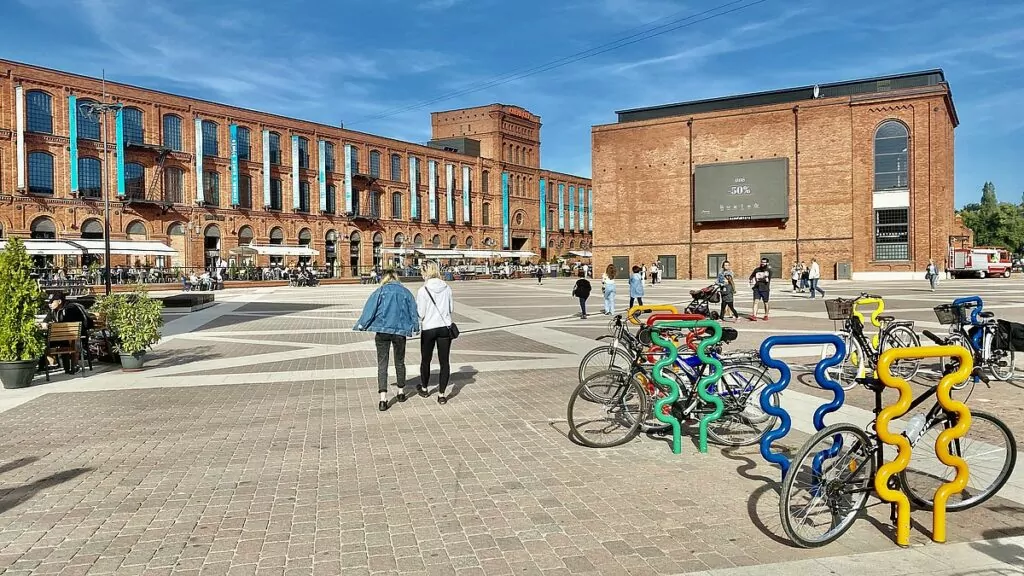
Today the buildings include shopping centres, museums, shops, restaurants, cafés, pubs, art exhibitions and a cinema. You can easily spend a lot of time here.
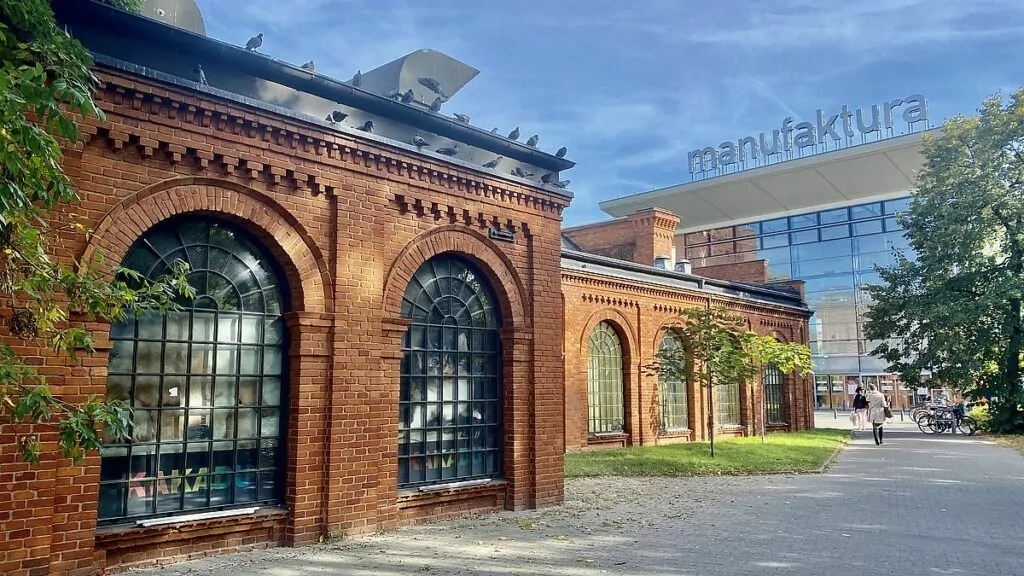
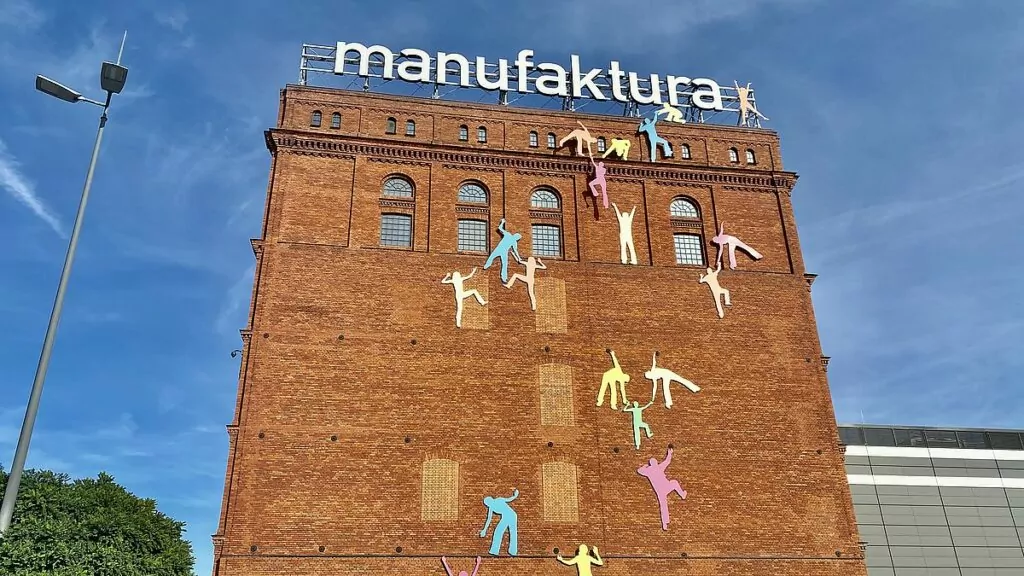
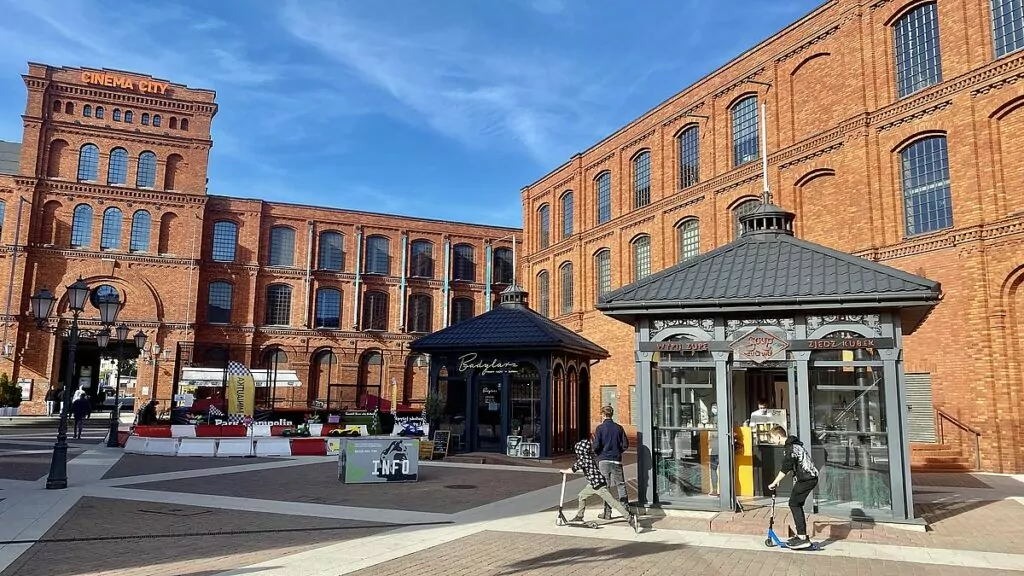
2. Strolling along Ulica Piotrkowska street
Another thing not to be missed is strolling along Ulica Piotrkowska. One of the longest shopping streets in Europe, its full length is around 4.2 kilometres, running from Freedom Square (Plac Wolności) to Independence Square (Plac Niepodległości). The street is also lined with many beautiful houses, many of which have a history linked to one of the three factory owners.
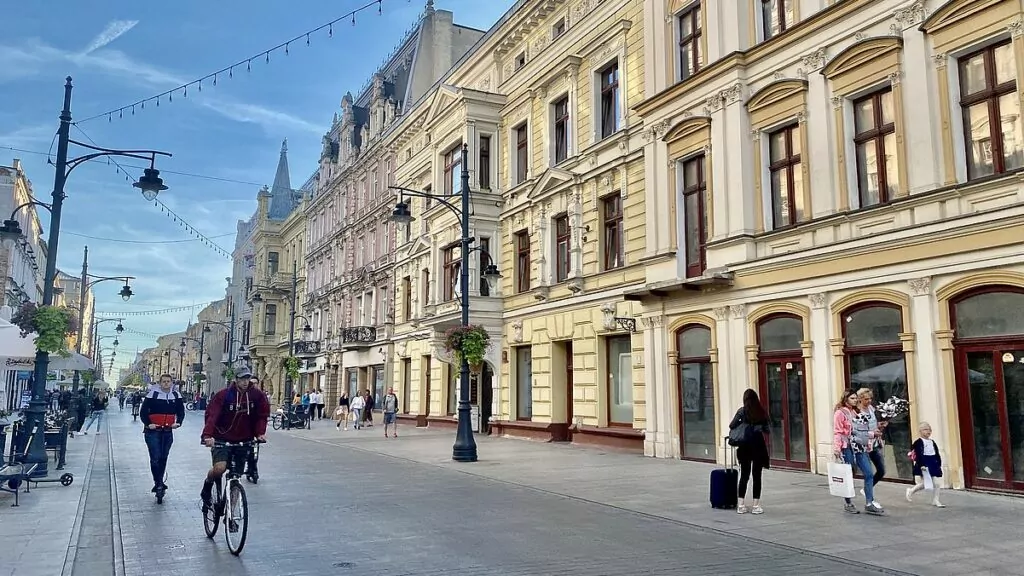
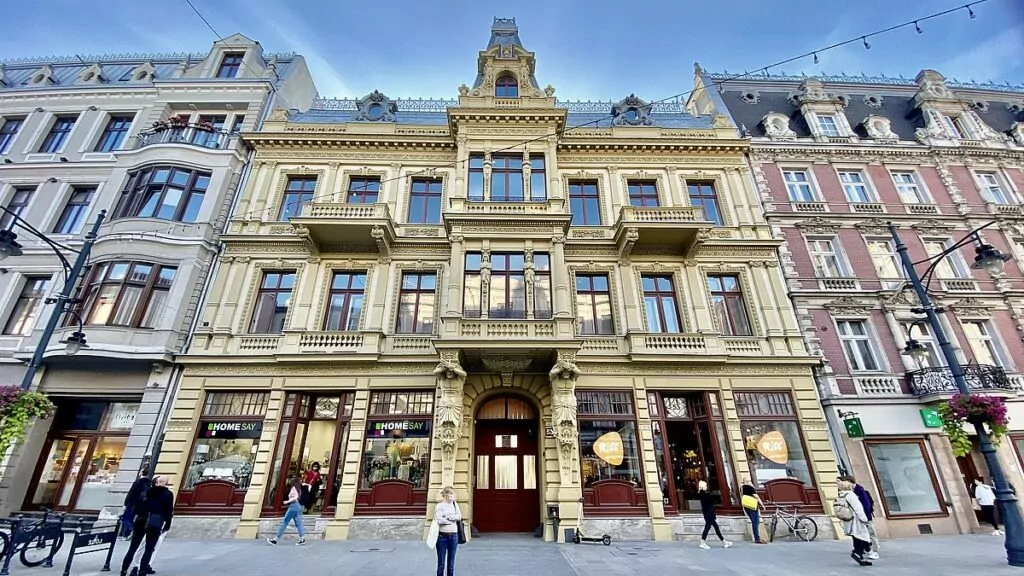
3. Visit the Palace of Izrael Poznański
If you're an important factory owner in the 19th century, you naturally want a grand palace. When Izrael Poznanski built his palace, he didn't want to cut corners or styles, opting for a combination of neo-renaissance and neo-baroque. Today you can find the Łódź City Museum here.
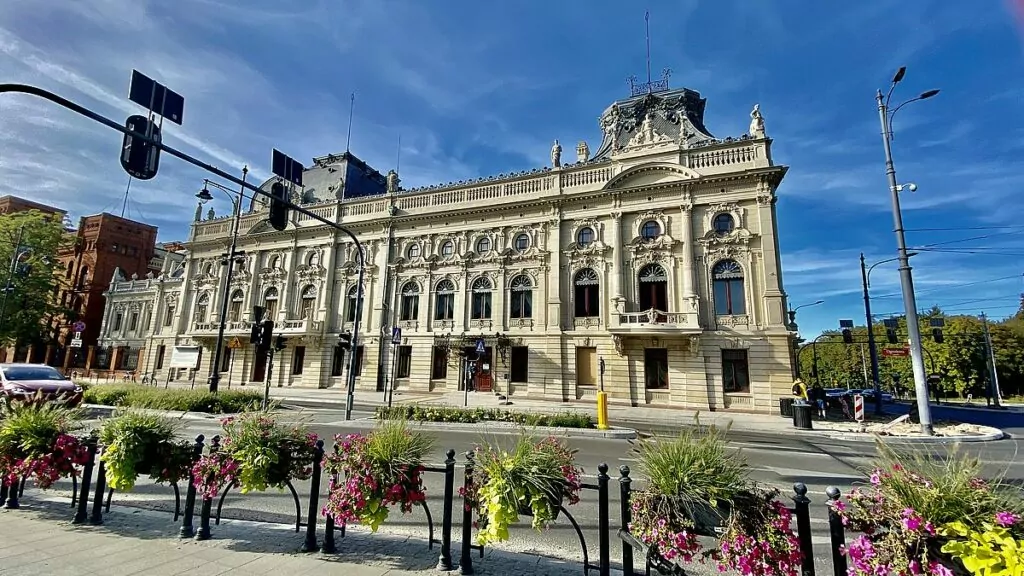
4. Feel the wings of history at Muzeum Fabryki
Located in the Manufaktura, the Muzeum Fabryki tells the story of life in and around the textile factory. There are several of the large weaving machines from the past, and on the walls are photos showing what it looked like when these machines were packed tightly and filled hall after hall.
The young guide in the museum told us that her grandmother worked in the factory, every day from early morning to late evening. The guide started up a machine so we could hear what it sounds like when it is in operation. When all the machines were running at the same time, the sound must have been deafening.
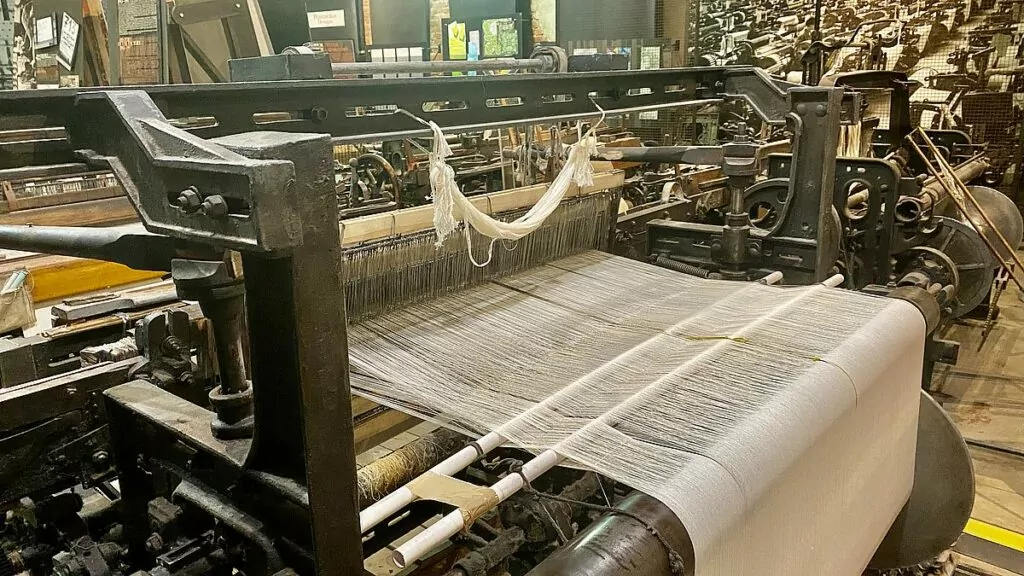
5. Experience art at ms1, ms2 and the Herbst Palace
If you want to see art in Łódź, you can visit ms1, ms2 and Edward Herbst Palace. Ms1 and ms2 showcase avant-garde and contemporary art from the 20th and 21st centuries. At the Edward Herbst Palace you can see collections of early Polish and European art.
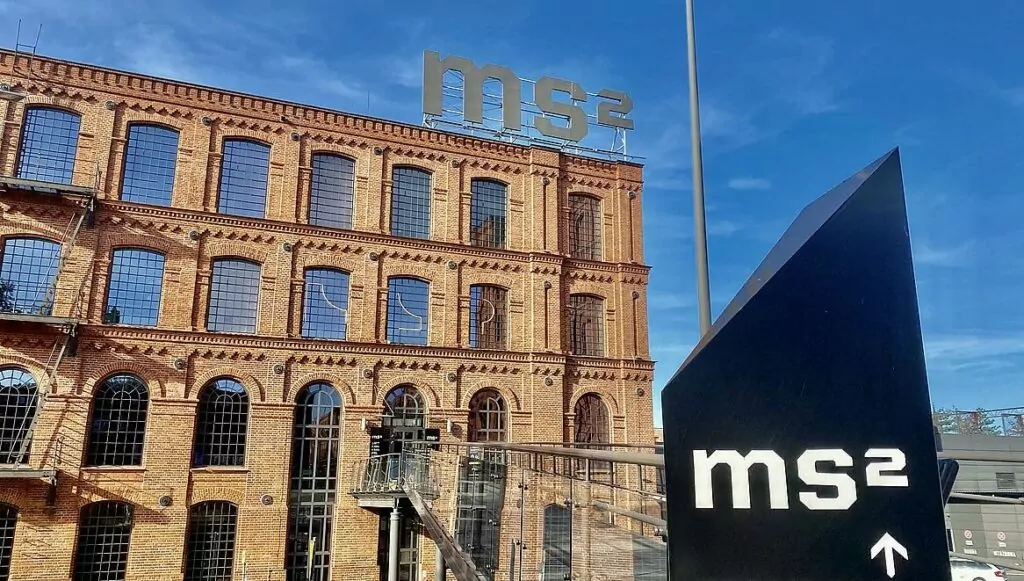
8. Learn about stars and science at EC1
EC1 was once a power station and a factory. When the city was modernised in the 2000s, this part was also taken care of, and today it has been refurbished and given completely new functions. Part of the old factory is now a cultural centre with workshops and exhibitions, as well as a planetarium.
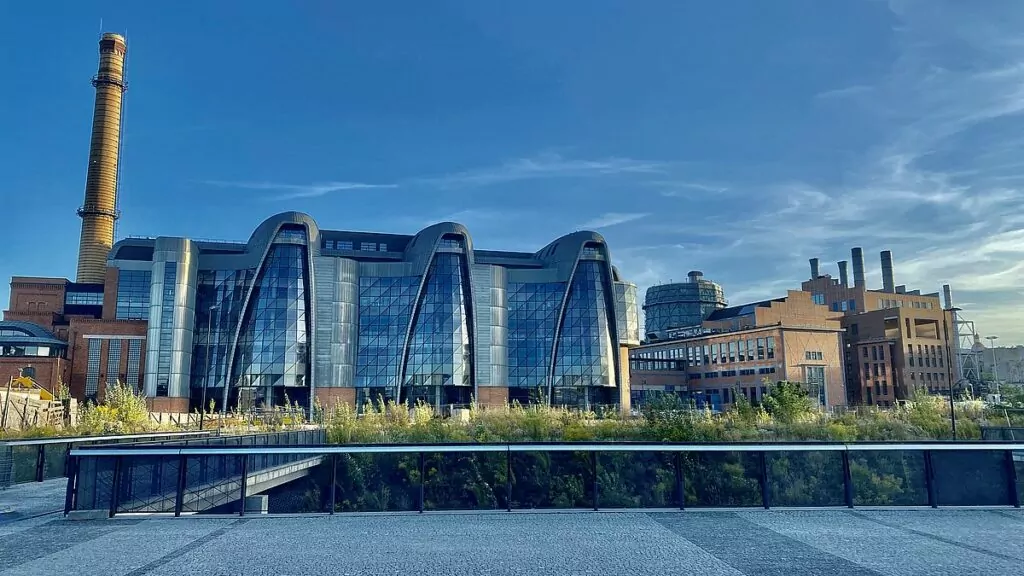
Another part of the old factory houses an interactive science and technology centre. You can also visit and learn more about the old power plant.
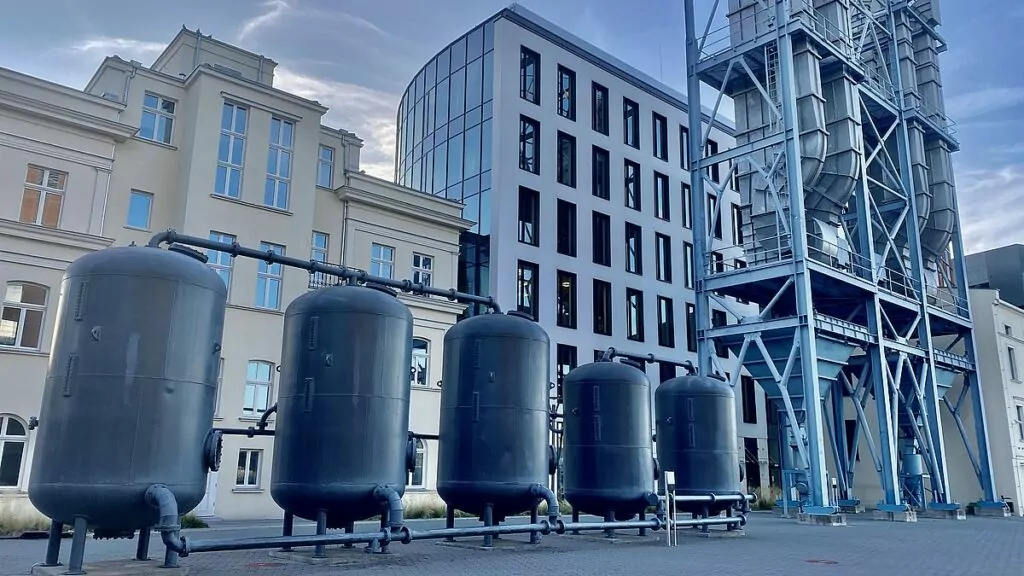
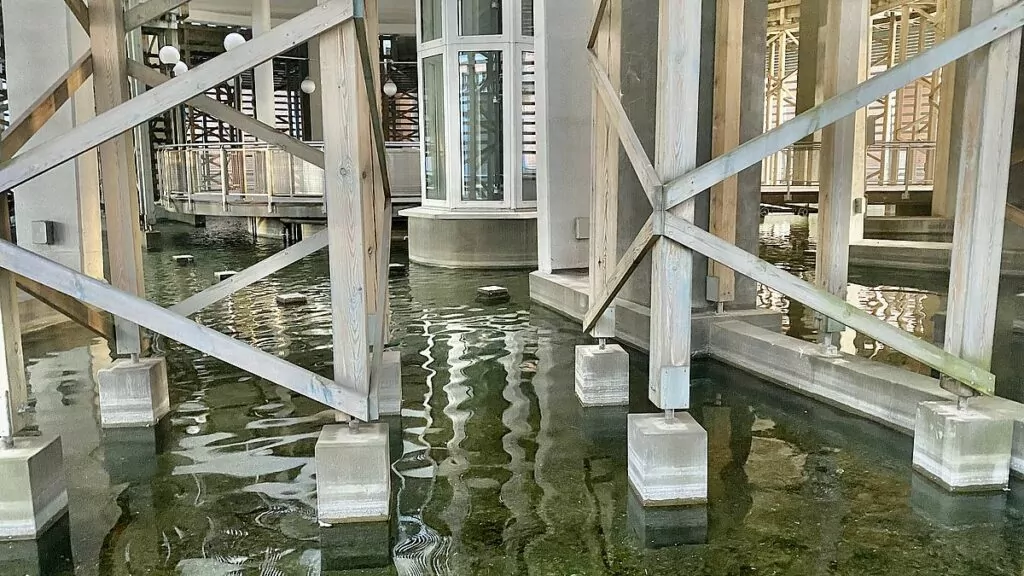
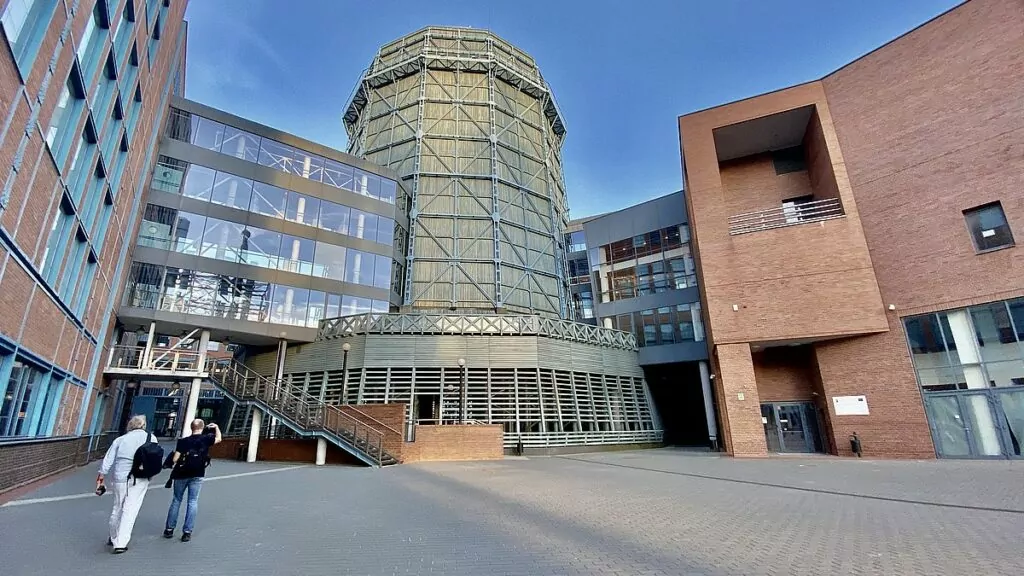
9. See modern architecture
Łódź has not only beautiful old factory buildings and palaces but also some modern architecture. When walking over to EC1, take a look at the Łódź Fabryczna railway station.
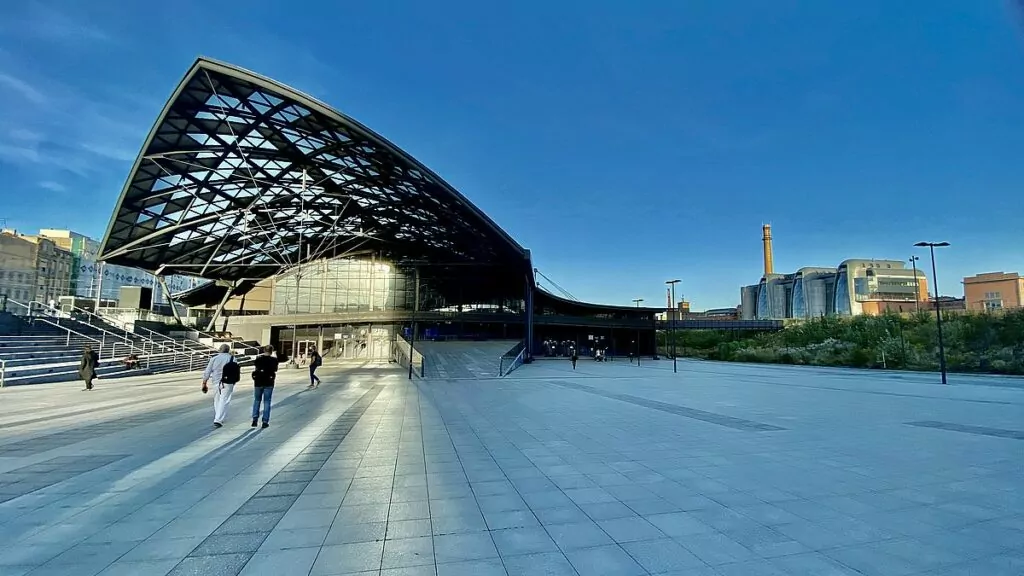
A railway station was built here as early as 1865 by factory owner Karl Wilhelm Scheibler. The new station was completed in 2016.
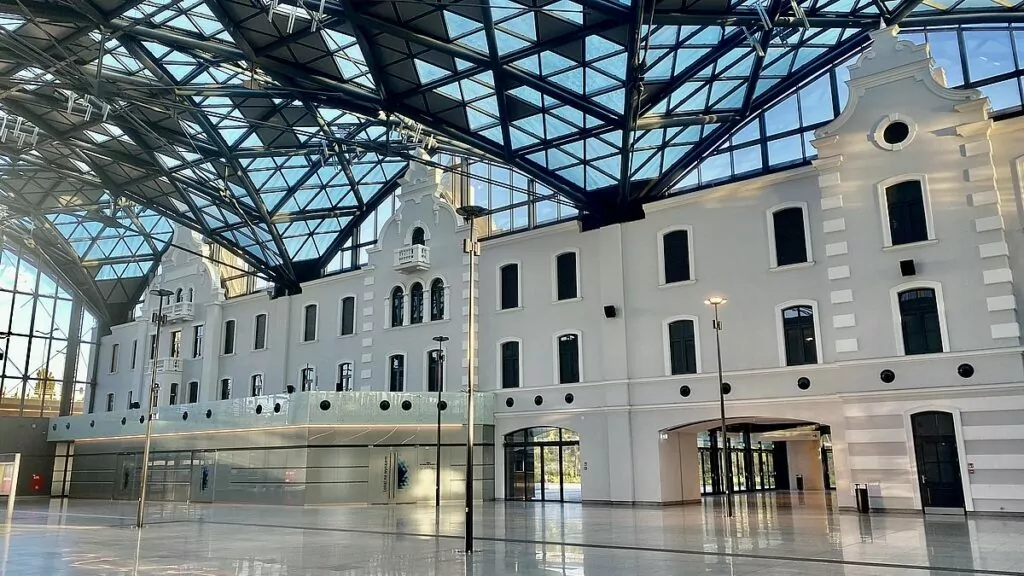
The picture below is another view of two new buildings, which effectively reflect the sun's rays.
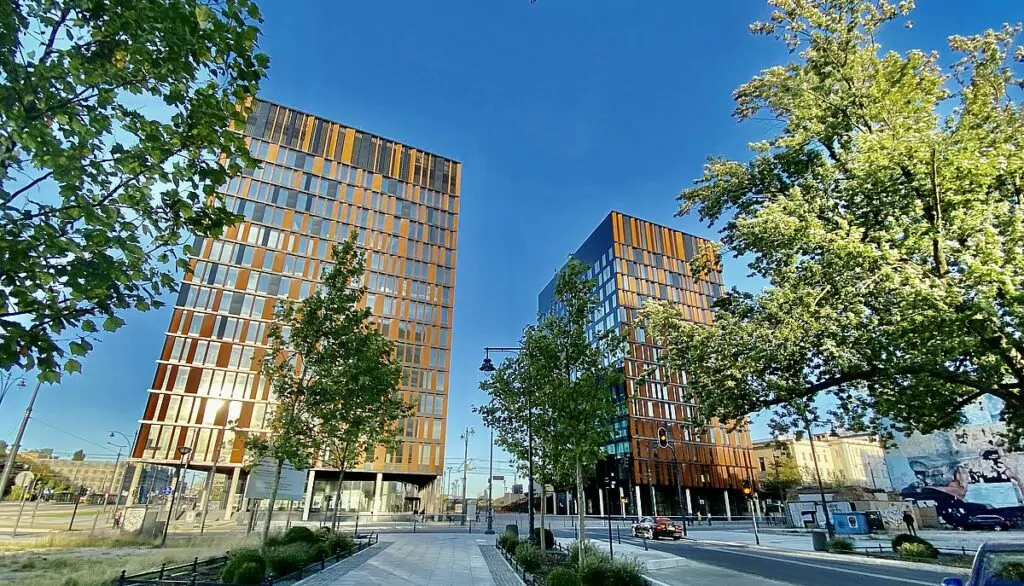
10. Check out exciting facades
There are also plenty of interesting facades around Łódź. One of the most interesting facades is the one called Rosas Passage, at ulica Piotrkowska 3. The artist Joanna Rajkowska covered the walls of a building with small mirrors. Fascinating! We also found a wall that someone had decorated with miniature balconies with miniature figures. Charming!
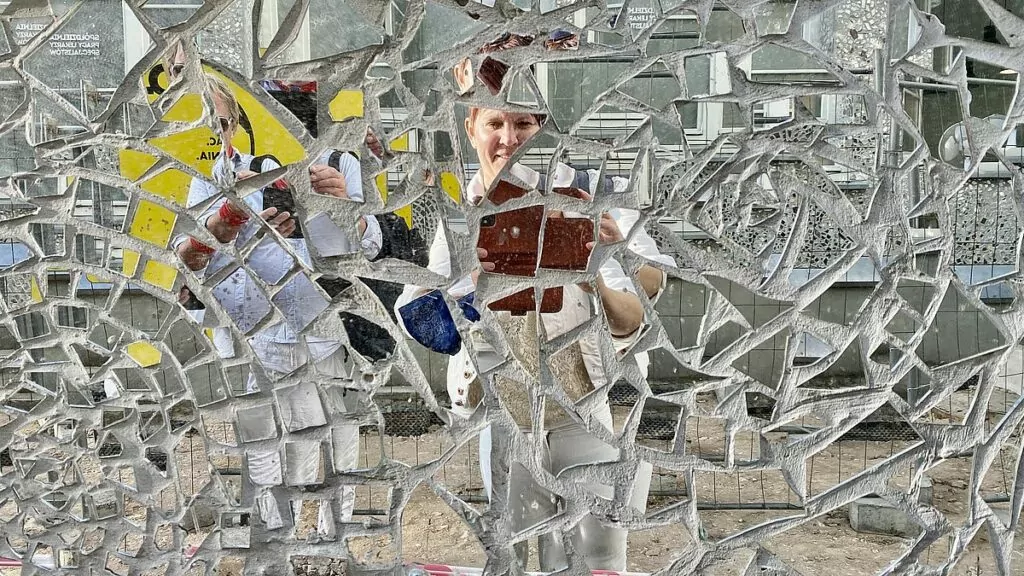
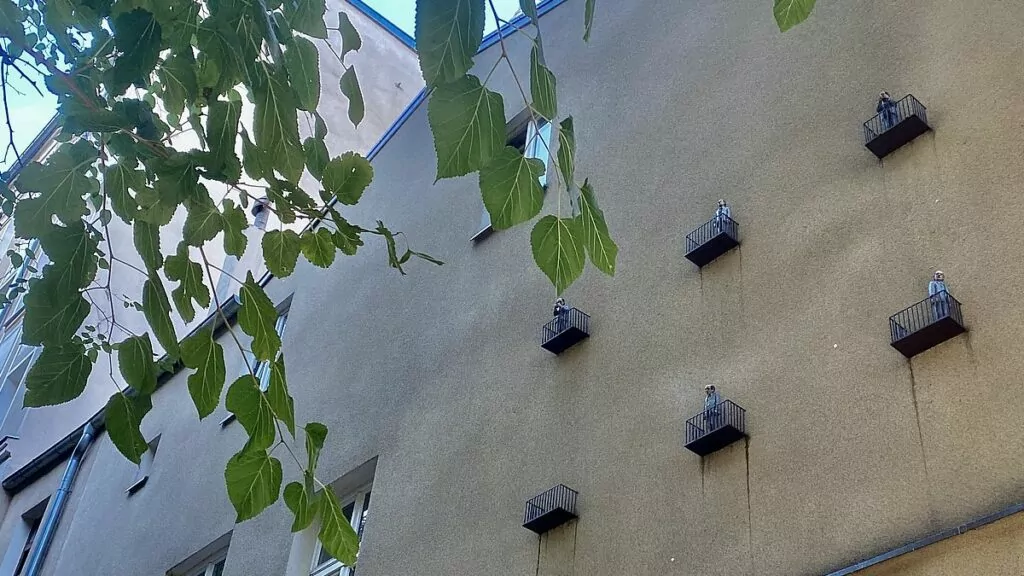
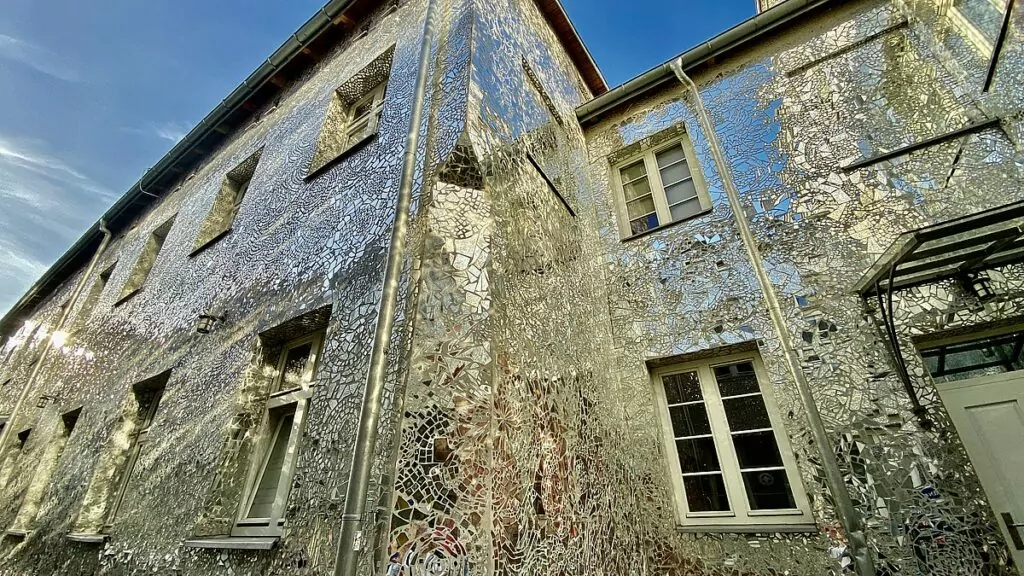
Even more beautiful and special facades can be found if you know which courtyard to look into. The easiest way to find them, of course, is to go with a guide.
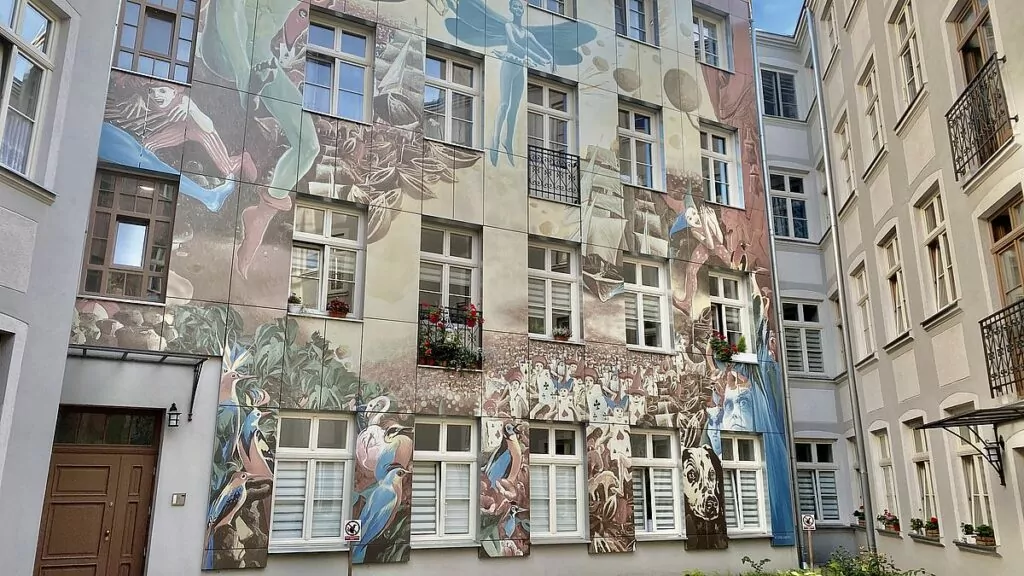
11. Seek out Łódź street art
In addition to interesting facades, there is plenty of street art and murals in Łódź.
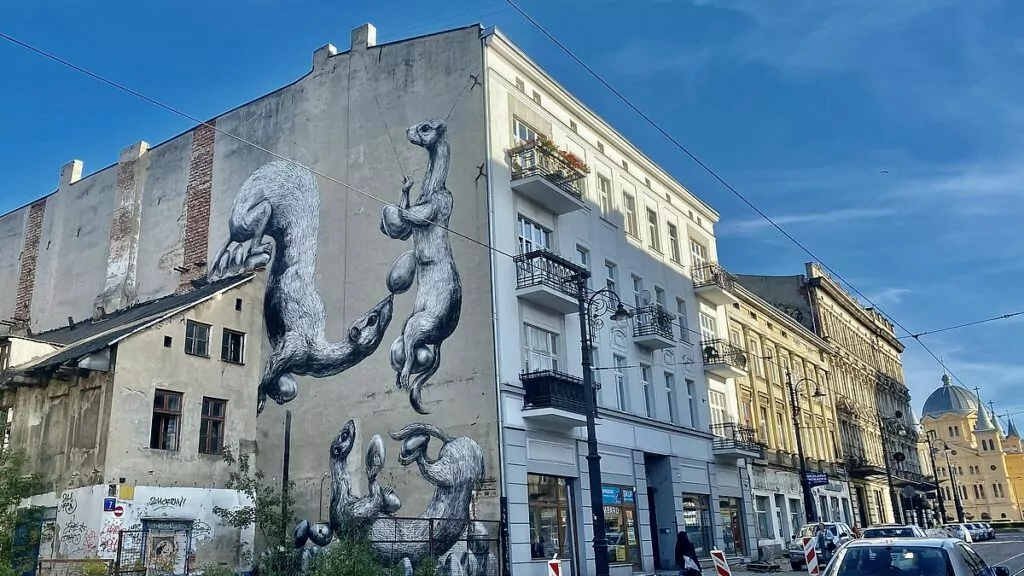
For example, the image below shows a mural of Polish-American pianist Artur Rubenstein, painted by Brazilian artist Kobra. The butterfly on the wall next to it? It's an advertisement for a chain of shops, left over from the communist era.
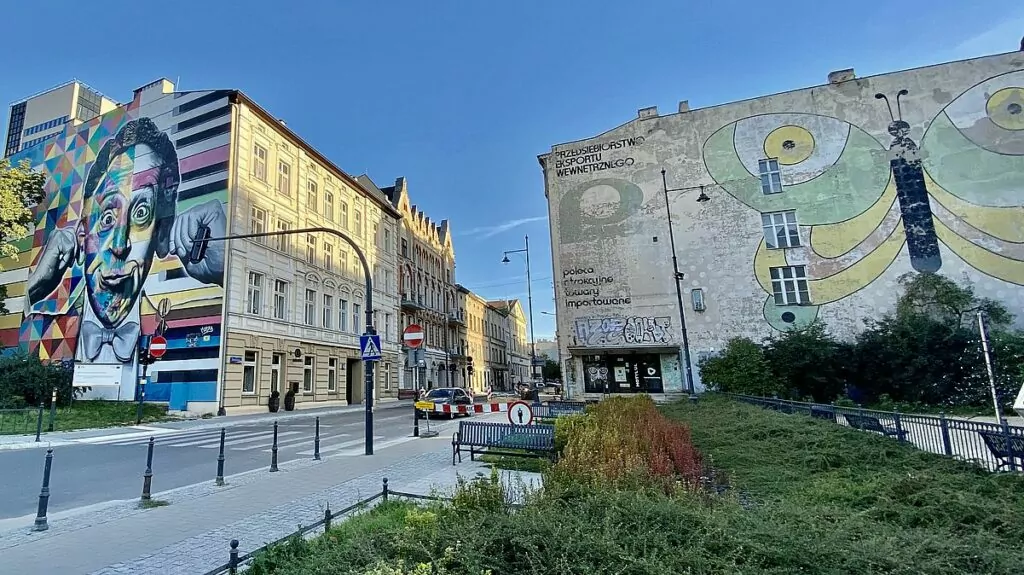
12. Reminded of the horrors of war at Radegast railway station
Łódź has a heavy World War II history and a good way to learn about it is to visit the Radegast railway station. During the war, this station was used to deport Jews and Roma to the Łódź ghetto or to various extermination camps. Today there is a memorial and a small museum here. Prepare for a heavy, but very interesting, visit.
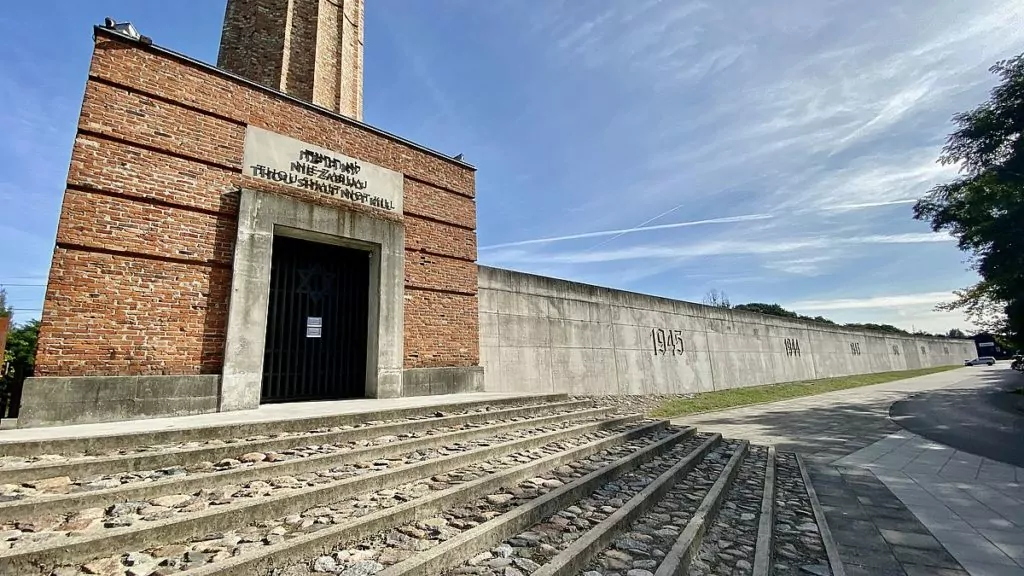
13. Walking around the Jewish cemetery
Not far from the railway station Radegast is the Jewish cemetery, where you can see the large mausoleum of Izrael Posnanski. The cemetery is open every day except Saturday, and since we were here on a Saturday, we can only show a photo from the gate.
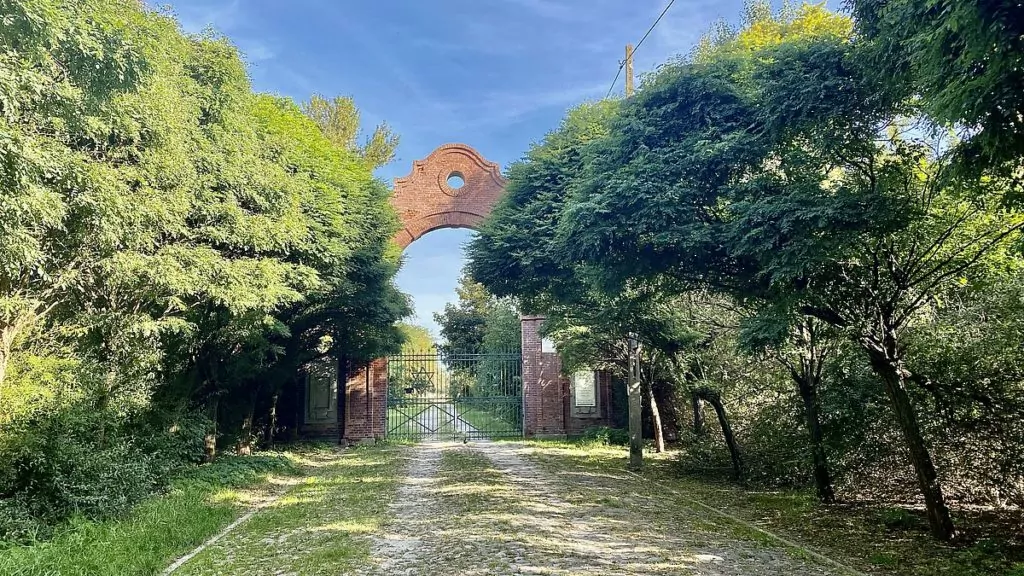
14. Hang out at OFF Pietrowska centre
The area known as OFF Pietrowska is located slightly off the main street Pietrowska and offers a relaxed and youthful atmosphere. Here you can find small design shops, trendy food trucks and casual hangouts. As we passed by, a group was watching an outdoor cinema.
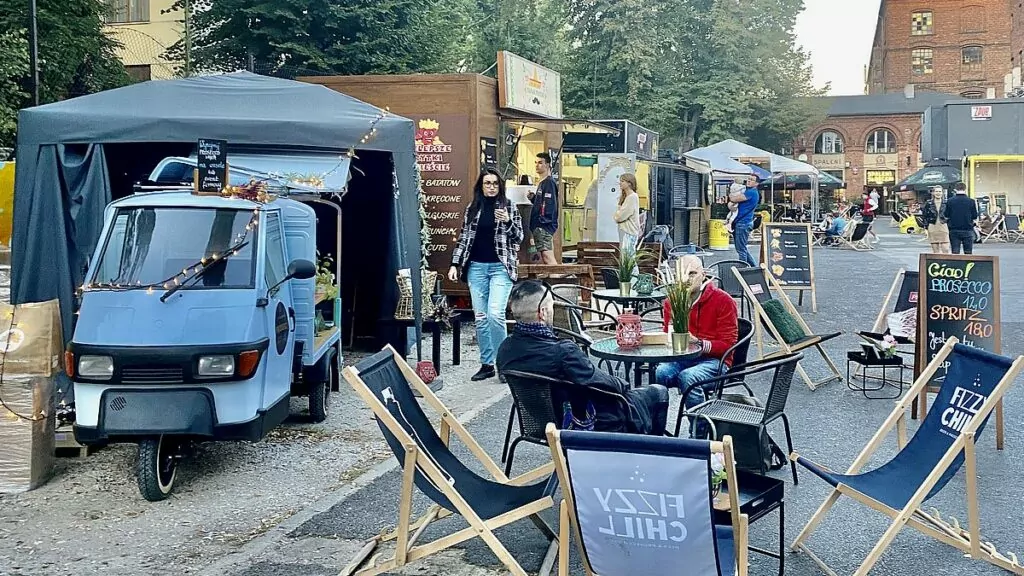
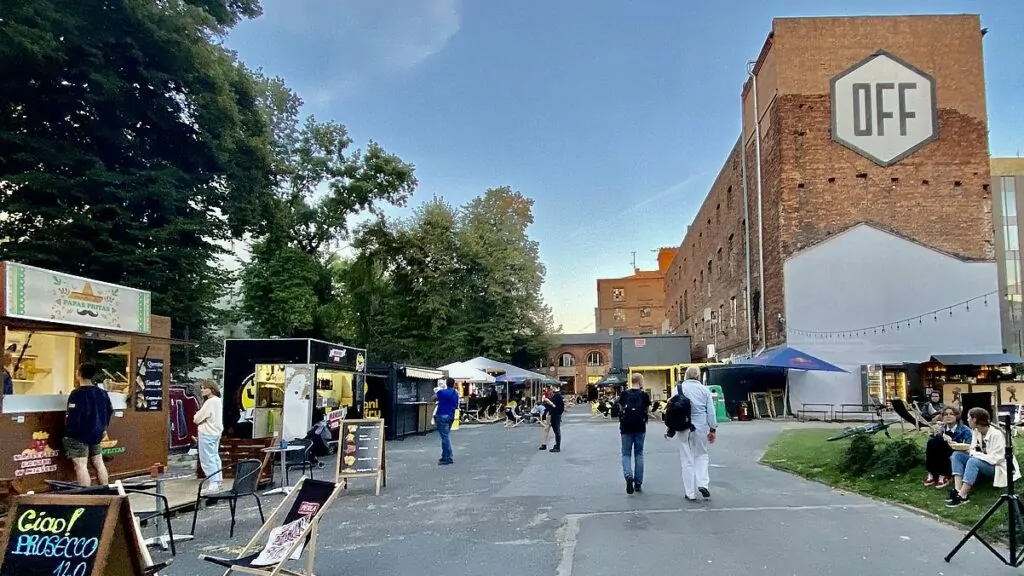
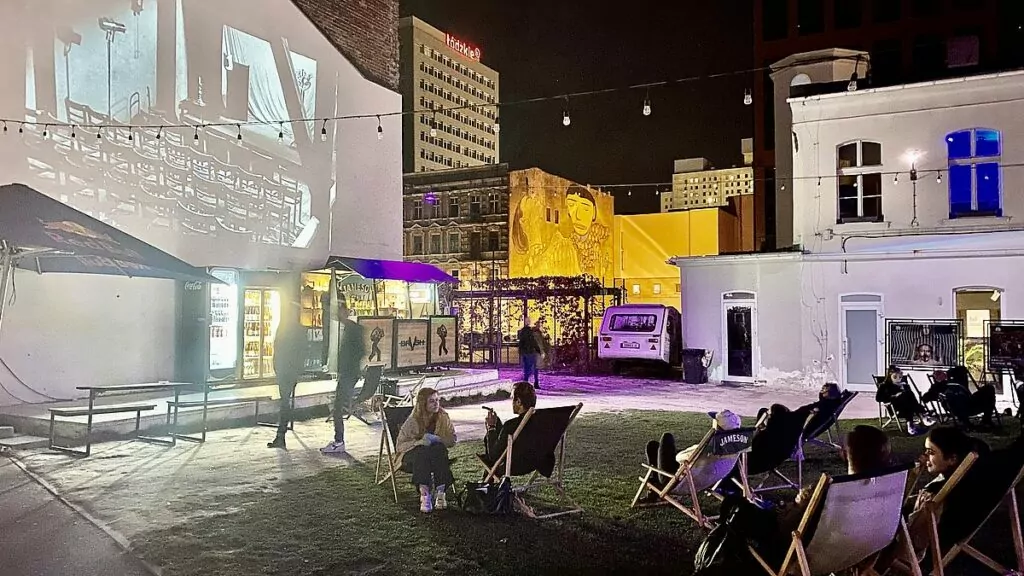
In this area we also found a restaurant where we had dinner. Spółdzielnia is a cosy and relaxed restaurant, which in summer also has a large outdoor terrace.
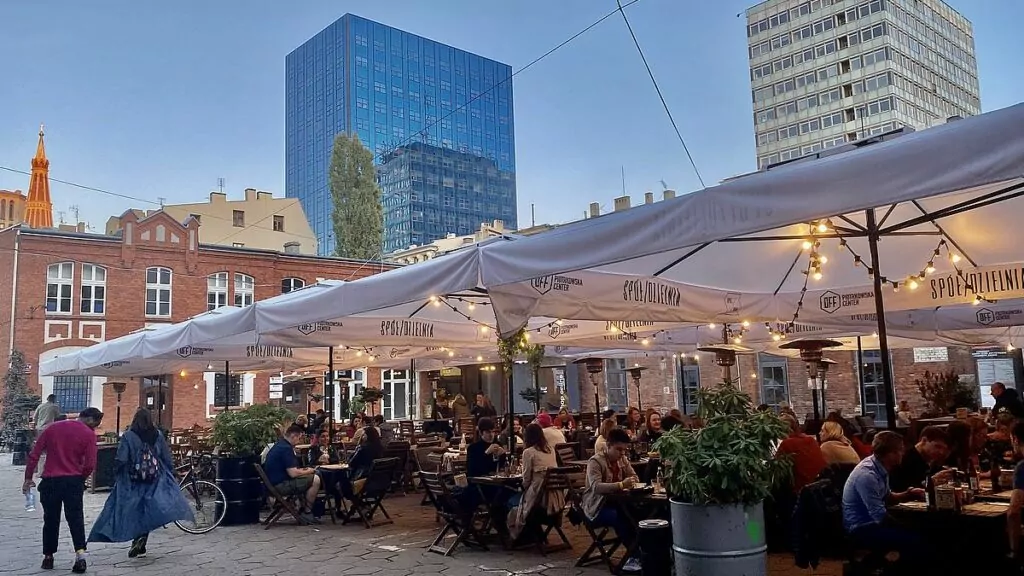
We started with a small starter of prawns. Peter then chose a burger with gorgonzola and I (Helena) chose a chicken dish with Asian flavours. Very good!
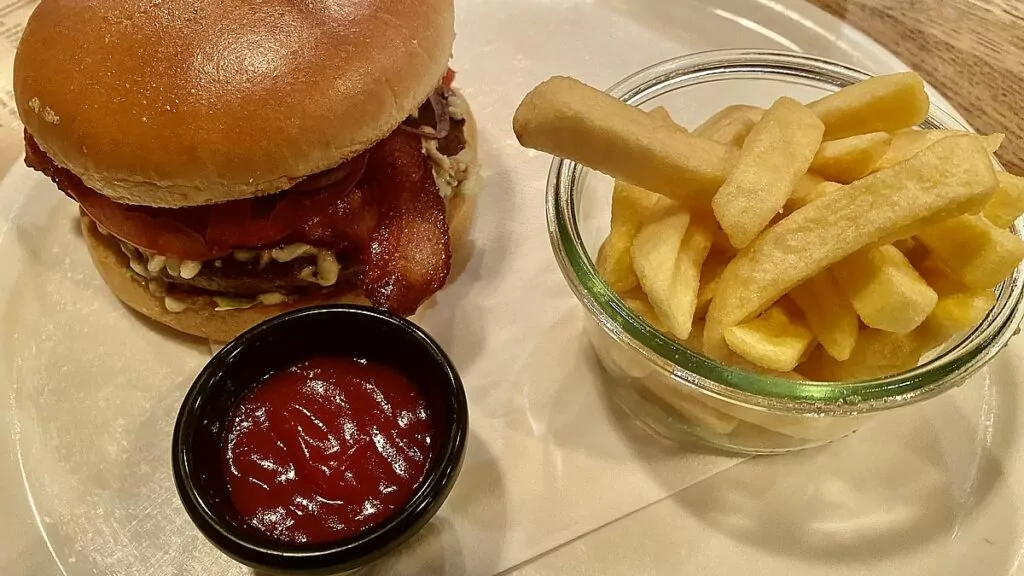
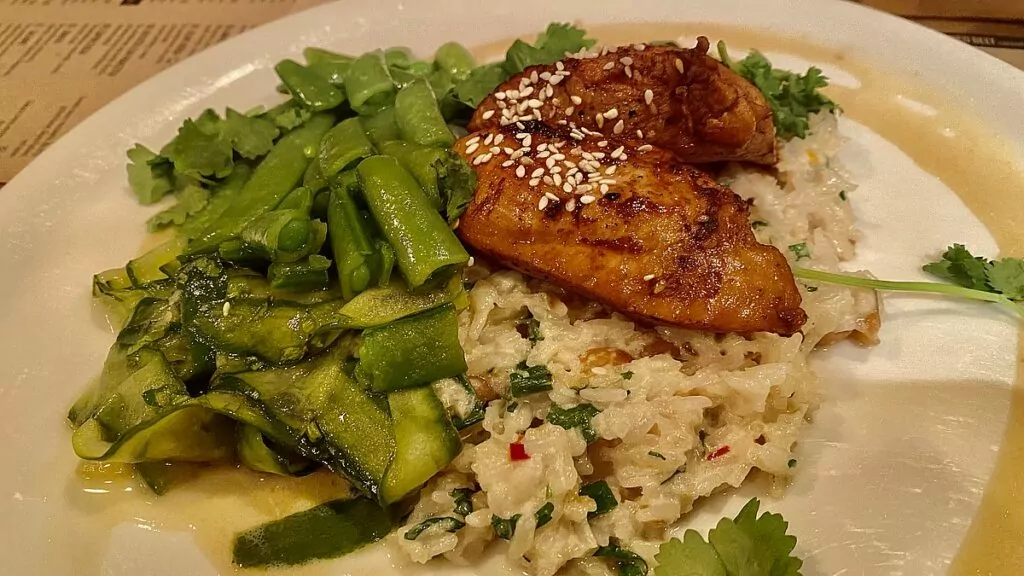
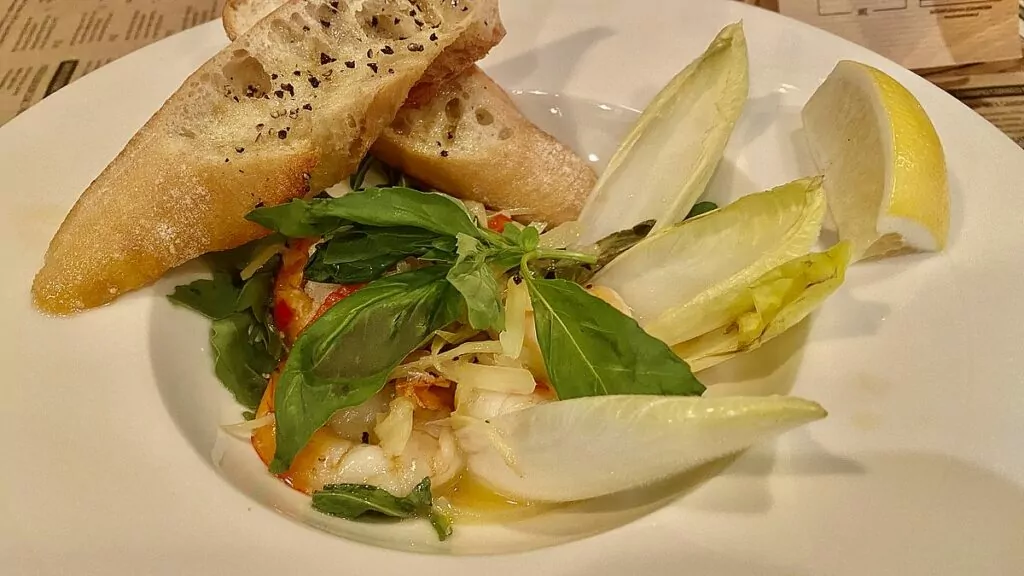
15. Relax in Park im. Adama Mickiewicza
There are a number of different parks in Łódź. We parked our motorhome at one end of Park im. Adama Mickiewicza and therefore walked for a while in that particular park. Nice and peaceful!
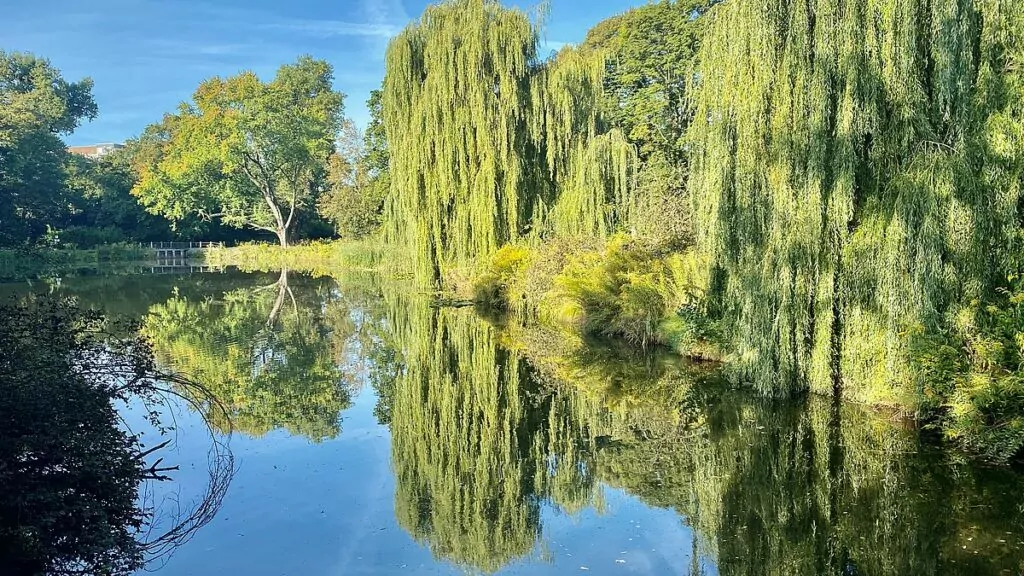
More to see and do in Łódź
There is, of course, more to see and do in Łódź than we managed to do during our relatively short visit. We're actually keen to go back and see more of this lovely city! Here are some more things to see and do.
Architecture and monuments
- Alexander Nevsky Cathedral - an Orthodox church named after the Russian saint Alexander Nevsky, Jana Kilińskiego 56.
- Archcatherdal Basilica of St Stanislaus Kostka - an early 20th century cathedral.
- Palace of Karol Scheibler - one of the industrialists' palaces, plac Zwycięstwa 1.
- Karol Scheibler's chapel - one of the industrialists' chapels, Old Cemetery, Ogrodowa Street 43.
- Ksiezy Mlyn - a group of 19th century textile factories and associated facilities in the southern part of the city.
- White Factory - a 19th century white factory building with cultural activities, Milionowa.
- Litzmannstadt Ghetto - the area that served as a ghetto during the Second World War.
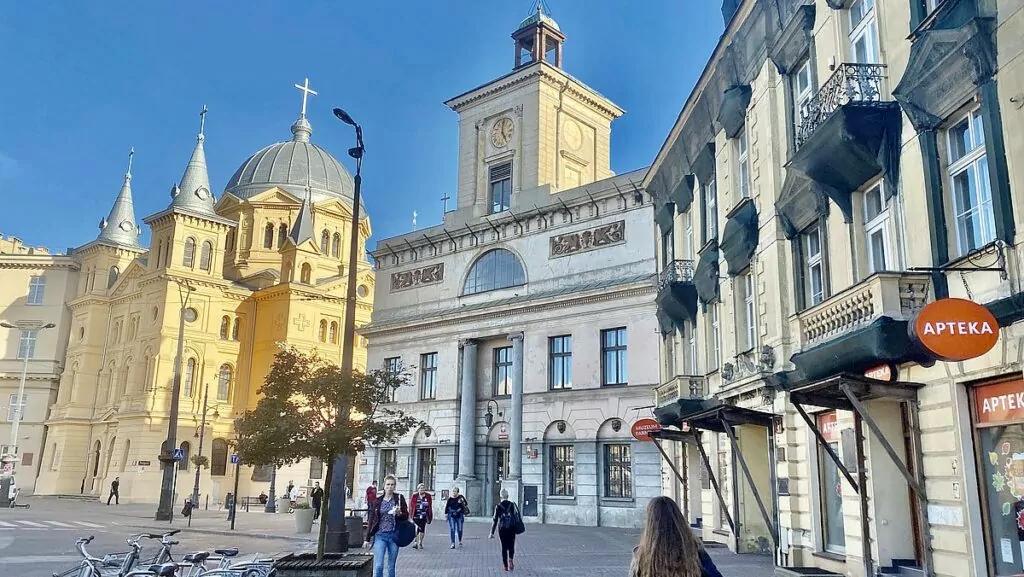
Museums and activities
- Łódź Walk of Fame "HollyLodz" offers film history with a film school and its own version of the Hollywood Walk of Fame.
- film museum - Muzeum Kinematografii is located at plac Zwycięstwa 1.
- Botanical garden - including a Japanese garden, Krzemieniecka 36/38.
- Palm house - with many species of palms and other trees, al. Marszałka Józefa Piłsudskiego 61.
- The Museum of the Independence Traditions - Historical museum on the struggle for independence, Gdanska 13.
- Science centre Exeperymentarium - science museum suitable for children, Drewnowska 58.
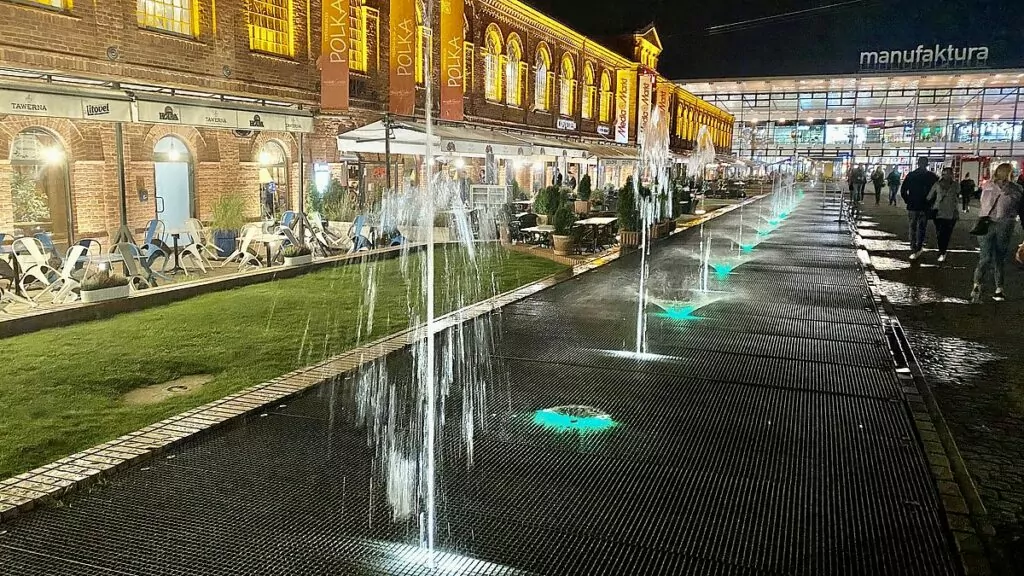
Where to stay in Łódź?
We travelled by camper van and chose a camper van parking indicated in the CamperContact app, namely at Zgierska at the Park im. Adama Mickiewicza. There were no services here, but we were perfectly located and within easy cycling distance to the city centre (less than 4 kilometres to Manufaktura).
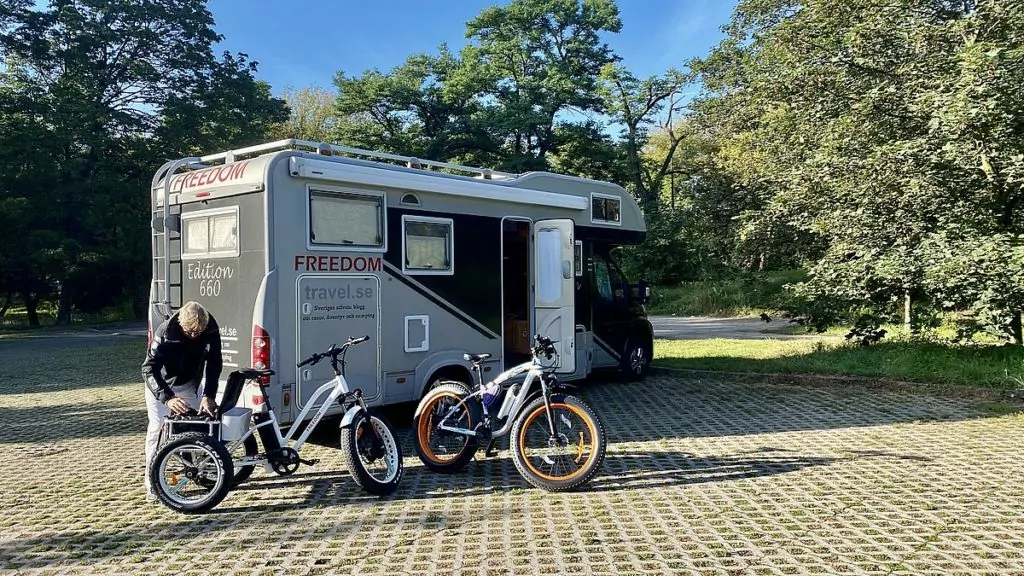
There are of course also plenty of hotels to choose from. We peeked into one of the most beautiful, namely Vienna House Andel's at Ogrodowa 17.
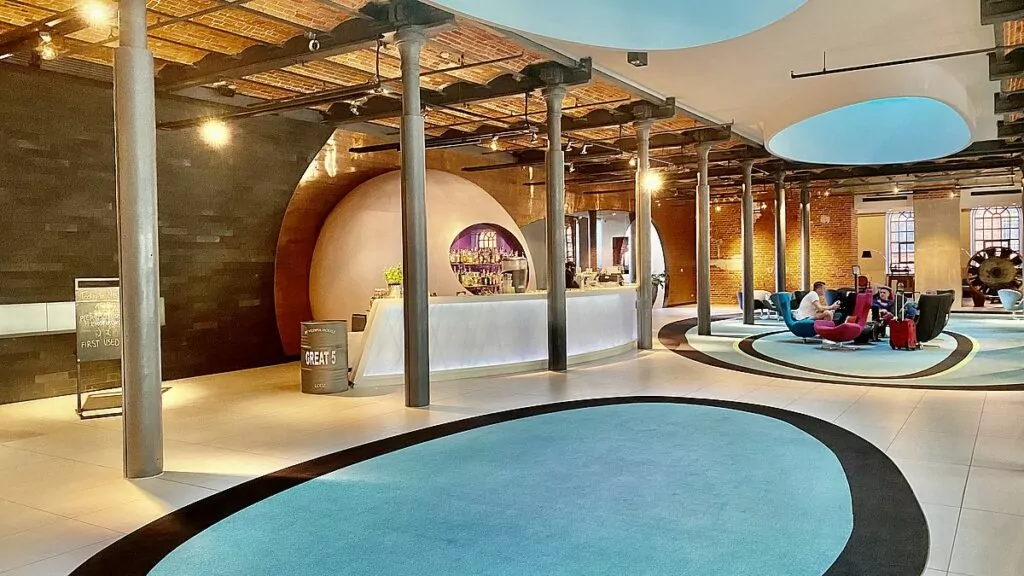
We also walked into a cosy little alley where we found both restaurants and the hotel Stare Kino (old cinema) at Piotrkowska 120. This was the site of the first permanent cinema in Poland in the 19th century. Today you can book yourself into apartments, where each apartment has its own film theme.
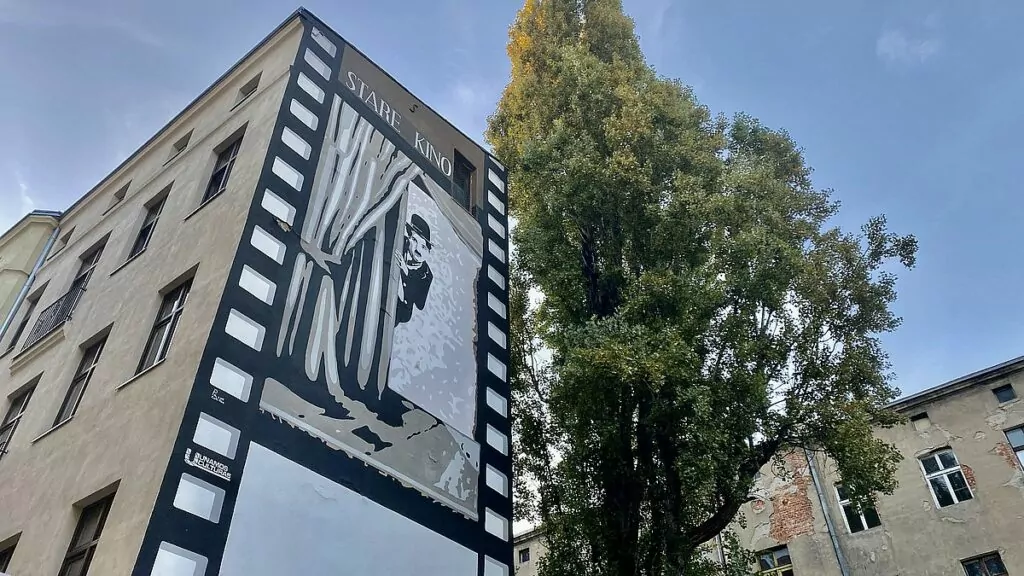
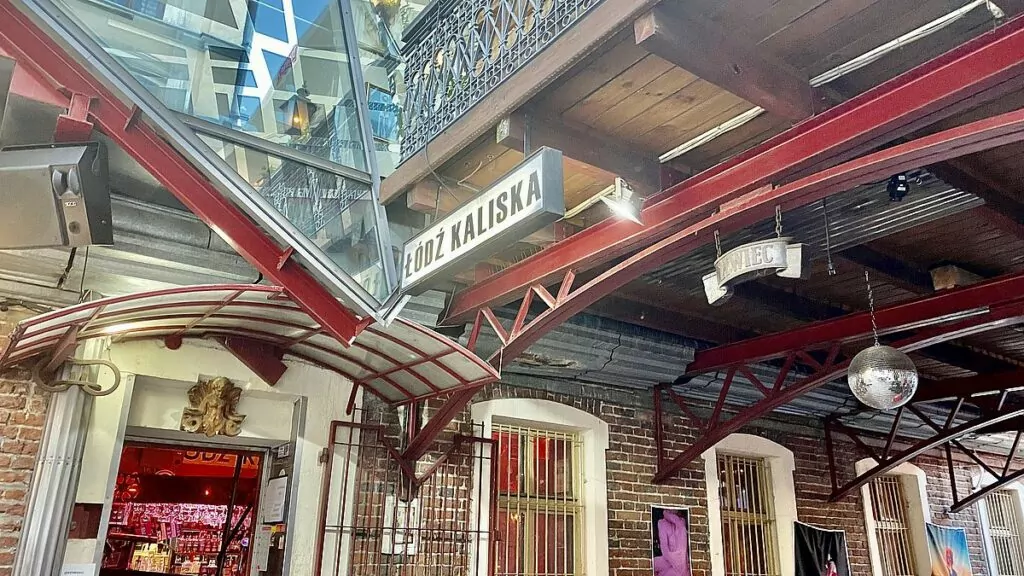
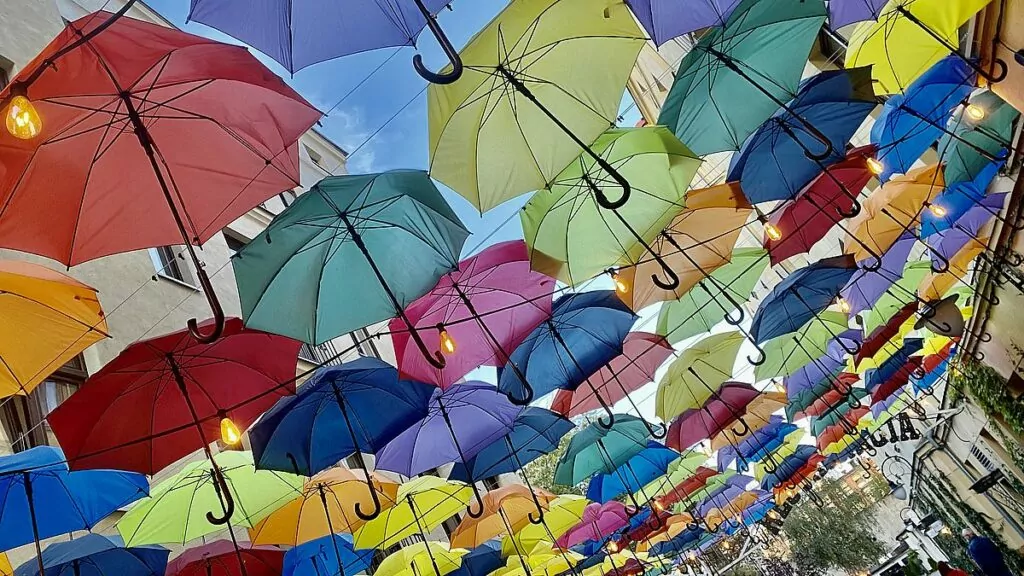
Video from Łódź
Nicolaus Copernicus' house in Torun, Poland
The Nicolaus Copernicus House in Torun is a museum that tells the story of the life of the astronomer Copernicus,...
Polish beautiful coastal road - FREEDOMtravel themed roads
The Polish Beautiful Coastal Road is a themed road that takes you along the whole of northern Poland and 50...
Łeba - a mysg holiday favourite in Poland
Poles love Łeba (pronounced Weba), and no wonder. Here you will find long white...
Wieliczka salt mine, near Krakow, Poland
Today we went to the salt mine in Wieliczka in Poland. We were not the only ones,...
Krynica Morska on Vistula Island - a holiday resort in Poland
Krynica Morska is located in north-eastern Poland, on the Vistula Island, and is a popular holiday and seaside resort. We...
Market in Gdansk dating back to the 13th century
Every year a huge market is organised in Gdansk for everyone in Poland, running up and down the street....
Canoeing in Wroclaw, Poland - a great experience!
We tried canoeing in Wroclaw, Poland. What a fantastic experience! Sometimes the...
Things to do in Swinoujscie, Poland - 7 tips
What to see and do in Swinoujscie, Poland? This time we came here with...
Camping Stogi in Gdansk - on the Polish coastline
Now we have made it to the Stogi campsite in Gdansk. We have been here before, but...
Kozlowka Palace in Poland - and a homely campsite
Kozlowka is a twenty-year-old palace in Poland that is definitely worth a visit. The palace is a...
Visenter in Poland - Bialowieza Forest, Bialowieza National Park
Mink in Poland! We have long dreamed of seeing wild bison in Poland and to...
The whole peninsula in Poland - Long white paradise beaches
The Hel Peninsula in Poland offers amazing views. This peninsula is a 35-kilometre-long spit of land that...
Baranow Sandomierski - castle in eastern Poland
We have now started the exciting journey eastwards in Poland! From having recently been in...
Gdansk attractions - a great place for a nice trip
Today we present a guest article Eating in Gdansk Travelling is a great way to discover the...
Krakow in Poland - tips and guidance in Swedish
Have you visited Krakow in Poland yet? Whether you're a newcomer to the city or a...
With Unity Line from Poland to Ystad - and a visit to Szczecin!
After a nice visit to Poland, in Gdansk and Szczecin, we travelled back with Unity ...
Masurian Lakes in Poland - A canal boat trip from Mikolajki
The Masurian Lakes in Poland offer a magical holiday paradise in the eastern part of the country,...
Unesco World Heritage Sites in Poland - 16 places of interest
Have you seen any of the Unesco World Heritage Sites in Poland? There are currently 16, and...
Malbork Castle in Poland - a medieval knight's castle
Malbork Castle in Poland is located in the Polish town of the same name. The castle was built by German...
With Polferries to Poland - and a visit to Gdansk
We have embarked on a small road trip, which started with Polferries to Poland, from...
Things to do in Krakow - 12 tips for Poland's historic centre
There is a lot to see and do in Krakow, and here are our personal tips. Krakow,...
Christmas market in Warsaw with fabulous decoration
Yesterday we went to the Christmas market in Warsaw. We were not lucky with the weather so to speak....
Polish food - specialities of Polish cuisine
Polish food, what is it? Polish cuisine is not often talked about ......
What to do in Szczecin, Poland - 9 tips
What to see and do in Szczecin, Poland? Szczecin, which can also be called Szczecin,...
Camping Metropolis in Sopot, Poland
We are at Camping Metropolis in Sopot and have now been joined by Peter's brother ...
Mechelinki - The charming little fishing village in Poland
Mechelinki used to be a small sleepy fishing village on the Polish Baltic Sea coast. Not far from here are holiday resorts...
Beachfront holiday apartment in Poland
Our friends have bought an apartment in Mechelinki, Poland. It is a newly built...
Torun, Poland - 12 things to see and do
Torun in Poland is a beautiful and historically interesting city that is a UNESCO World Heritage Site....
Travelling by motorhome in Poland - all you need to know
What is it like to travel with a motorhome in Poland? We've just come home after...
Baking St Martin croissants at a museum in Poznan
We got to try baking St Martin croissants at a museum in Poznan. So, what is...
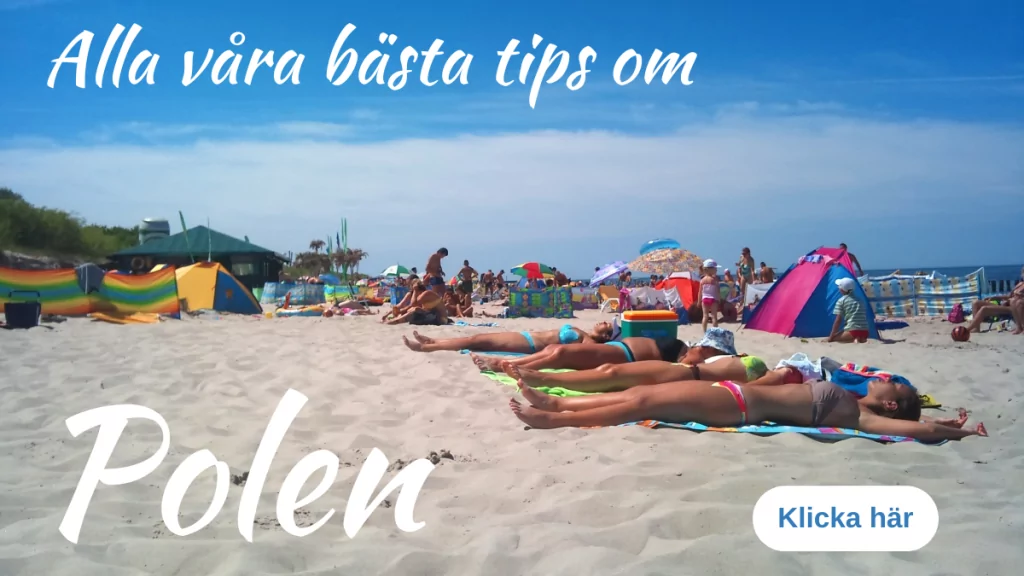
More tips for things to do in Łódź?
Have you been to Łódź in Poland? Is it a city you are curious to visit?
Facts about Łódź in Poland
- Country: Poland
- Vojvodship: Łódź
- Name: Łódź and in German Lodz or Litzmannstadt. The name means 'boat' in modern Polish. It is thought that the name may come from the small river called Łódka (meaning: small boat) that runs through the city. Although small, the river was once important in supplying water to much of the textile industry.
- Location: Łódź is a city in central Poland, about 13 miles south-west of the capital Warsaw.
- Å: Łódka
- Population: Around 700 000 (2016)
- Industries: The city used to be dominated by textile industries.
Travelling to Łódź in Poland
- Flight: There are direct flights between Arlanda and Warsaw.
- Car/caravan: For example, take a ferry from Nynäshamn to Gdansk or a ferry from Karlskrona to Gdynia. From Gdansk it takes just over 3 hours to drive to Łódź.
- Trains: Trains from Gdansk to Łódź take around 5 hours, via Warsaw.
ŁÓDŹ history
- 1332: The town is mentioned for the first time as a village.
- 1423: Łódź was granted city privileges.
- 1655-1660: During the Swedish invasion of Poland, the town was temporarily depopulated.
- 1793: After the partition of Poland, Łódź became part of Prussia.
19th century
- 1815: Łódź became part of the Russian Empire.
- 1825: The first factory started, and a year later the first textile factory started. People moved to Łódź to find work.
- 1839: Poland and Russia's first electrically powered factory started.
- 1850: Customs duties between occupied Poland and Russia were abolished and Łódź could start selling to the Russian market.
- 1865: Railway connections to major Polish cities doubled the city's population.
20th century
At the beginning of the 20th century, Łódź had almost 400 000 inhabitants, of which around 40 per cent were German and just over 20 per cent were Jewish. The city had more than 600 industries with over 50,000 workers.
- 1914: During the First World War, Russia fought against Germany, and Łódź fell into German hands.
- 1918: Poland declared independence and Łódź disarmed and deported the German soldiers. Most German-speaking residents fled to Germany.
- 1930s: The city was hit hard by the American depression, and the Russian market closed. Many became unemployed.
- 1939: The city was defended by General Juliusz Rómmel, but was invaded by German troops on 8 September. The city was annexed by the Third Reich and renamed Litzmannstadt after its commander Karl Litzmann. A Jewish ghetto was created.
- 1944: The Nazis liquidated the ghetto and only 900 people survived.
- 1945: By the end of World War II, Łódź had lost more than 400 000 inhabitants. The Red Army marched in on 18 January.

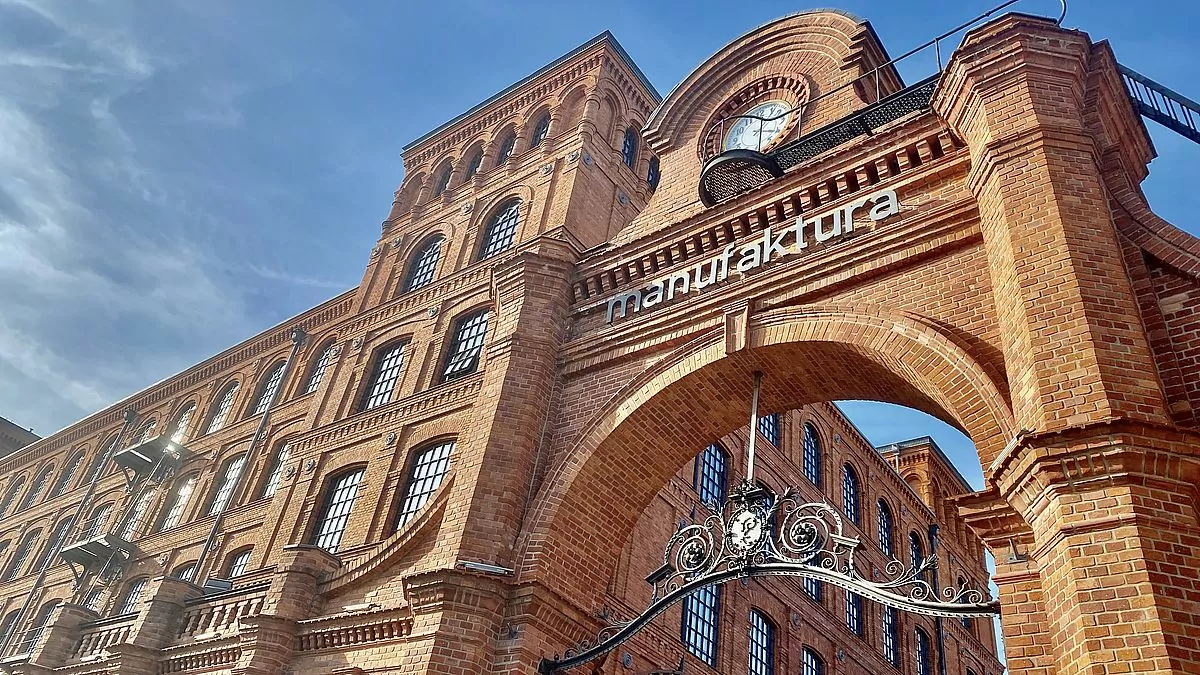
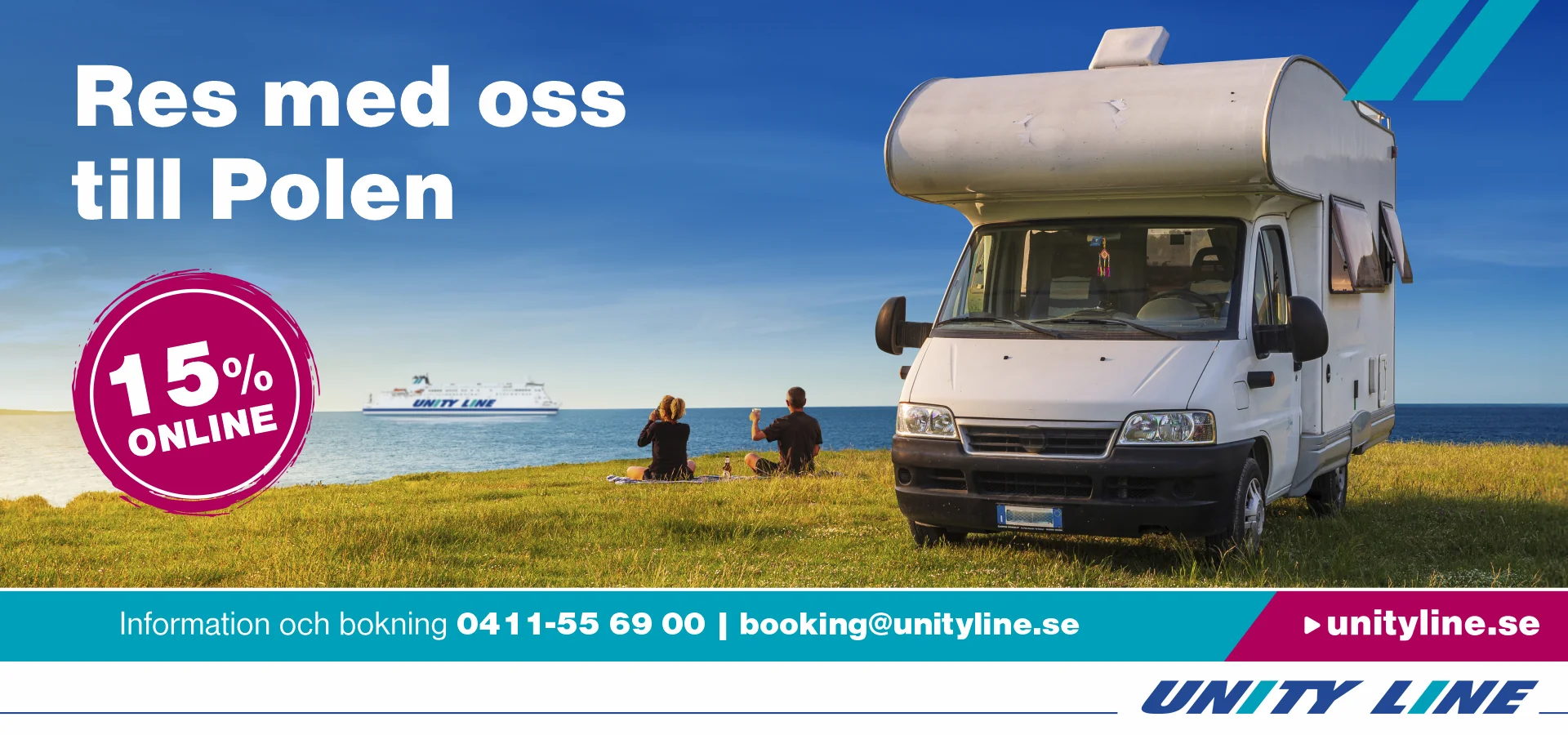







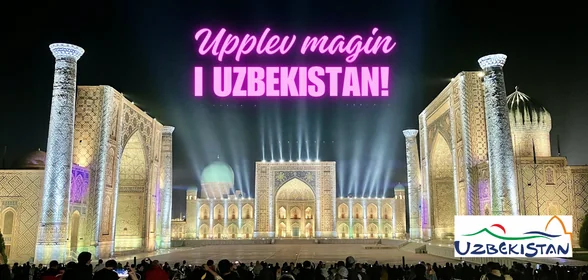

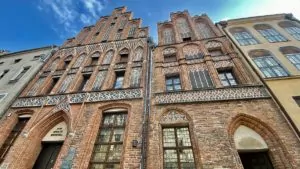
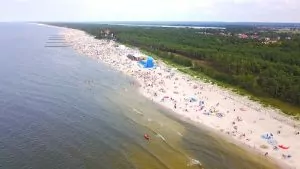
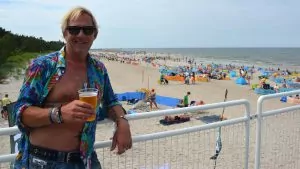
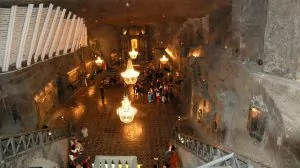
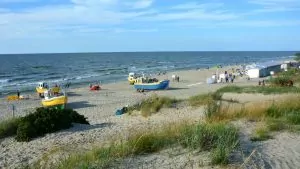
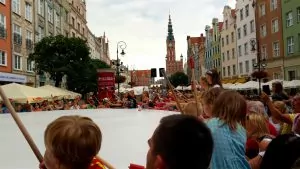
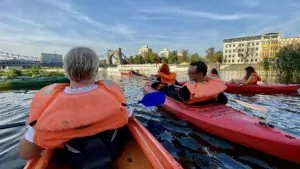
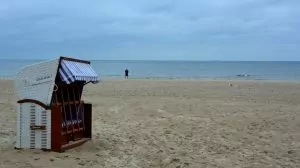
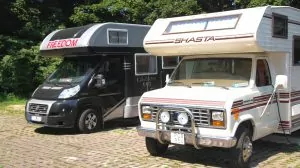
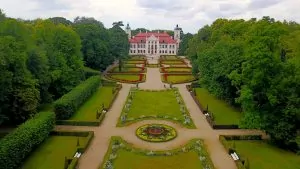
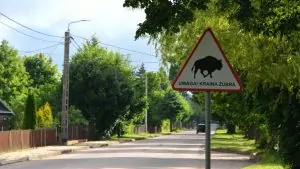
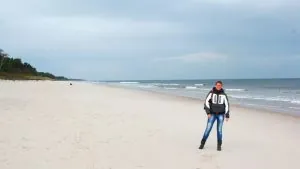
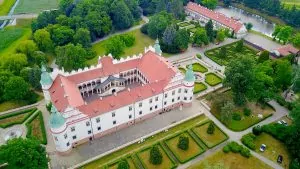
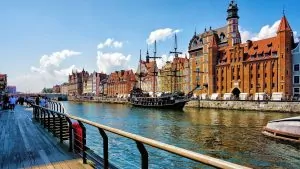
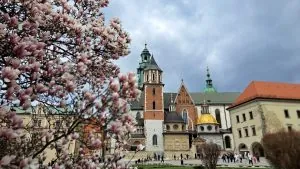
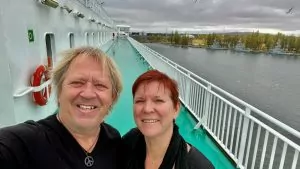
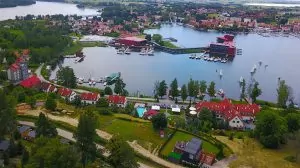
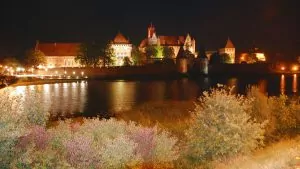
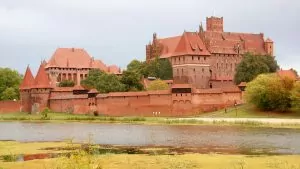
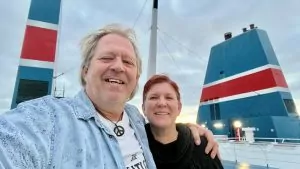
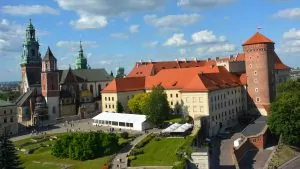
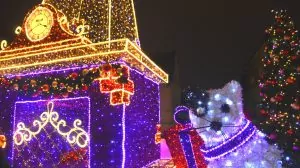
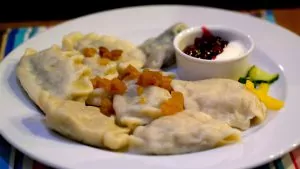
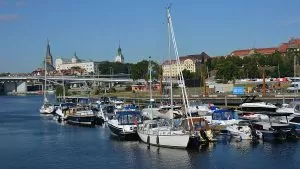
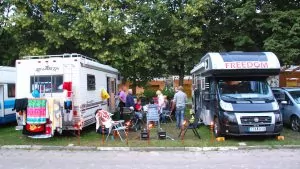
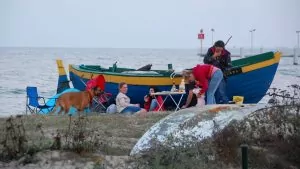
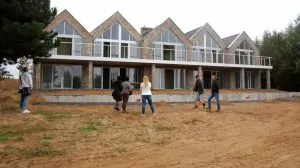
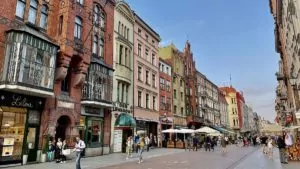
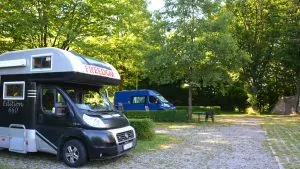
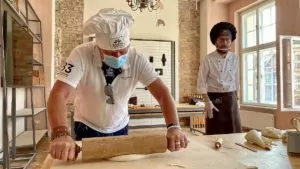
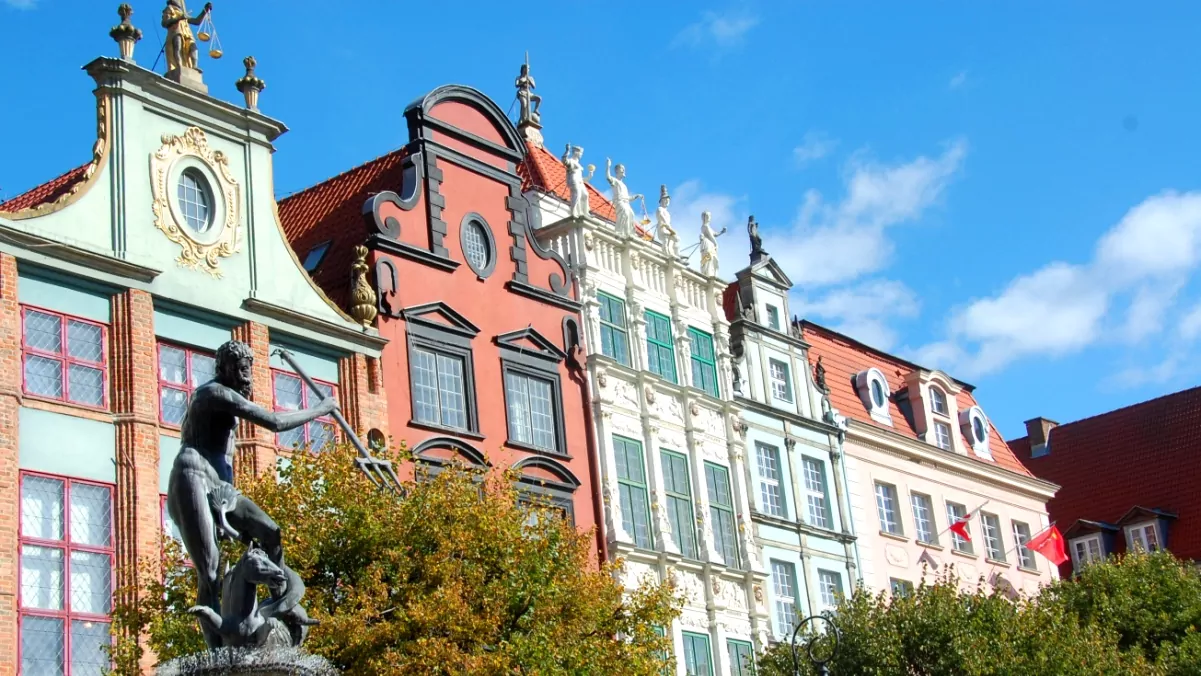
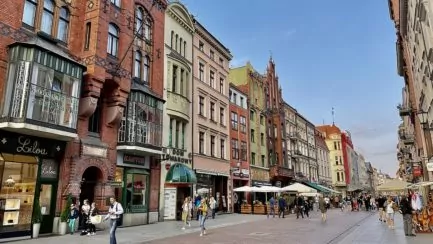
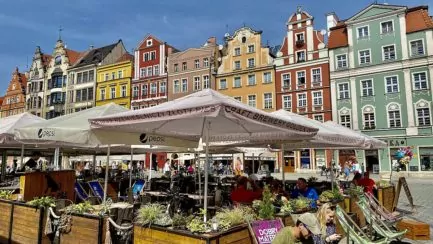
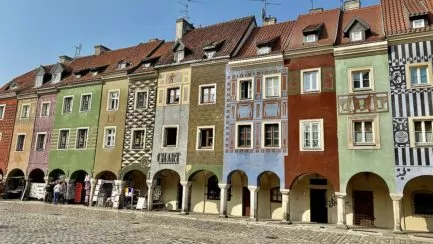
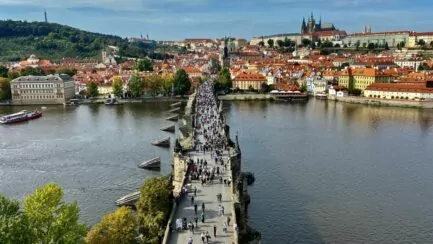
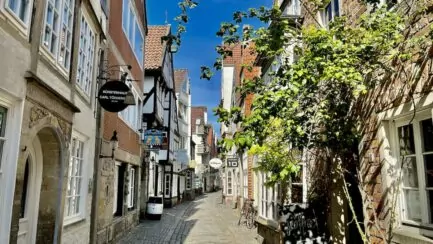



BP says:
There it is - the post about Łódź. And it was well worth the wait. I think the Poles are world champions at renovating old buildings and integrating them with new, futuristic houses. The architects really dare to do something different on all fronts. So incredibly delicious! Absolutely love the city.
08 November 2020 - 14:30
Helena says:
Haha. yes in the end! I really agree with you, and this city surprised us even more. Cool and exciting and youthful! 🙂
08 November 2020 - 18:31
bmlarsreseblogg says:
So many wonderful places there are if you head a little east. We are becoming more and more eager for each day that passes, but it is well just to obey and hold on, hold out and keep the distance and hope it has calmed down when it is spring and bright times again. After all, we are happy that we have the motorhome. It feels like the optimal way to travel for a while.
08 November 2020 - 16:22
Helena says:
There are really many interesting things to experience in that part of Europe! Yes, right now we are also taking it easy, but we hope it will ease in the spring, and yes, then a motorhome feels optimal! 🙂
08 November 2020 - 18:32
Annar+Aas says:
Thanks for a nice travel report. Worked all day yesterday so I read yesterday's post about shame. It felt great I have preached in two different churches today, when I read what you wrote yesterday I think I would have liked to copy that sermon, so I would have avoided my own text, the theme today was namely salvation, which is about working with yourself to become more empathetic loving and tolerant. Educating others and shaming others is not only unpleasant but directly counterproductive. Work on yourself and become a role model for others. Helena you would make a good preacher?
08 November 2020 - 17:45
Helena says:
But oh, thank you, I am completely touched by your nice comment! Thank you very much Annar, and wish you a nice Sunday evening!!!
08 November 2020 - 18:33
Eva / Leva som Eva says:
Looks really nice and interesting!
I read a Swedish book that won the August Prize many years ago: The Poor in Lodz. About the ghetto and the time around -44 I remember, sad but interesting.
08 November 2020 - 21:34
Helena says:
Yes, I am a bit curious to read it! I have read another book by the same author, and it was very good, although it was also horrible.
10 November 2020 - 17:08
Lena - gott för själen says:
But wow. What a city! Have never heard of it before, but it seems definitely worth seeing! Thanks for a great post!
Hug Lena
11 November 2020 - 6:21
Helena says:
We became very fond of this city! 🙂
12 November 2020 - 19:20